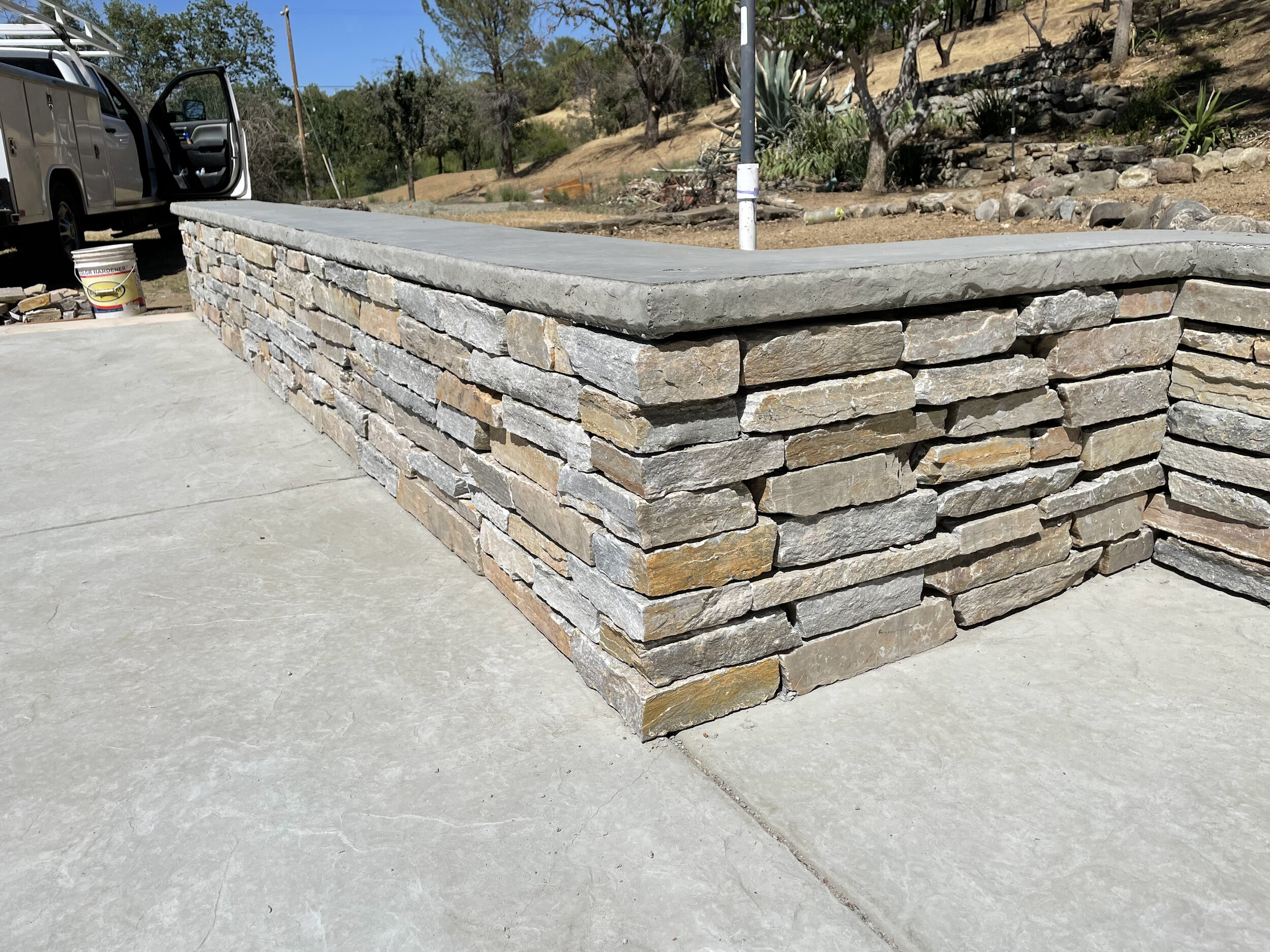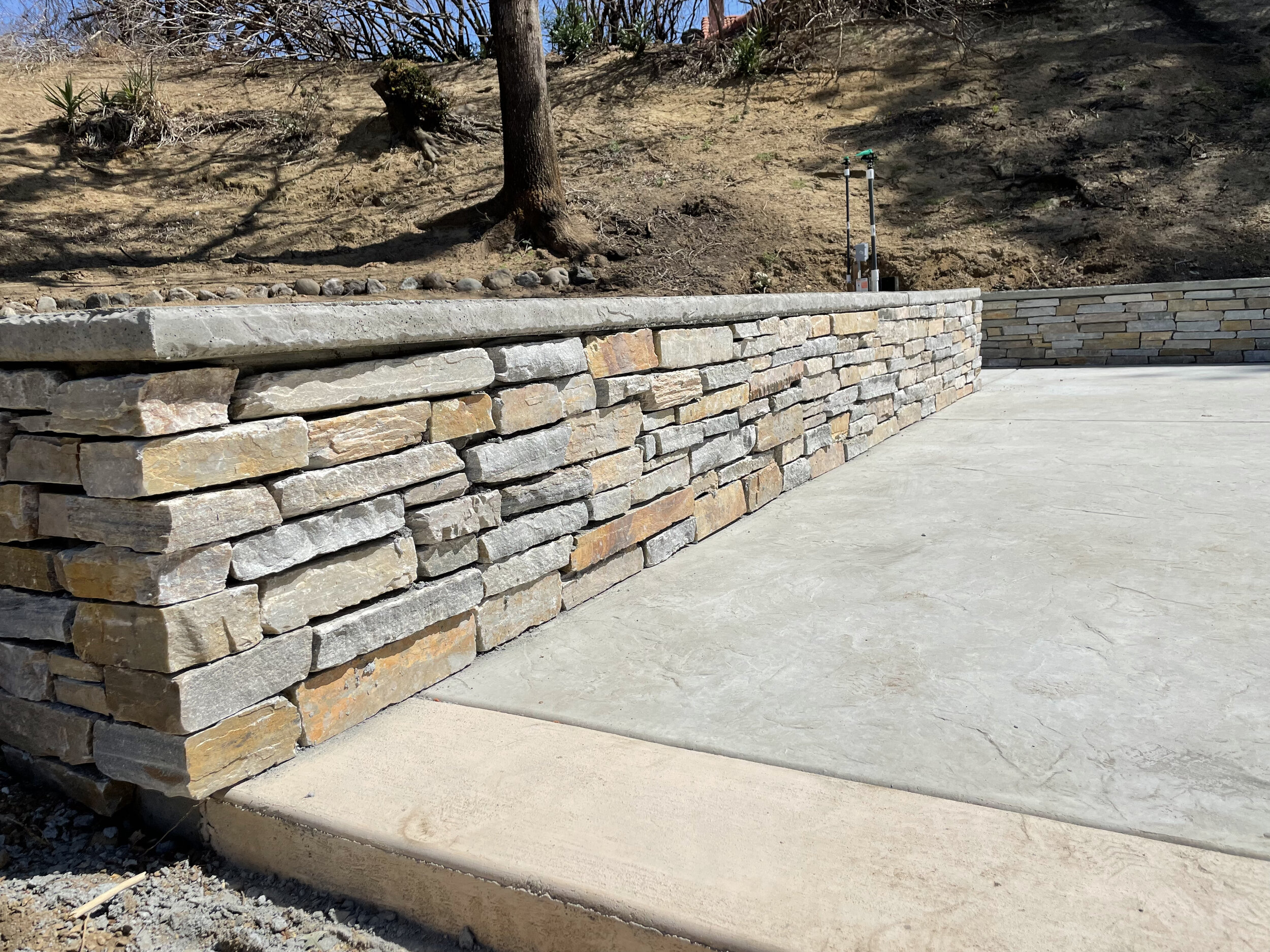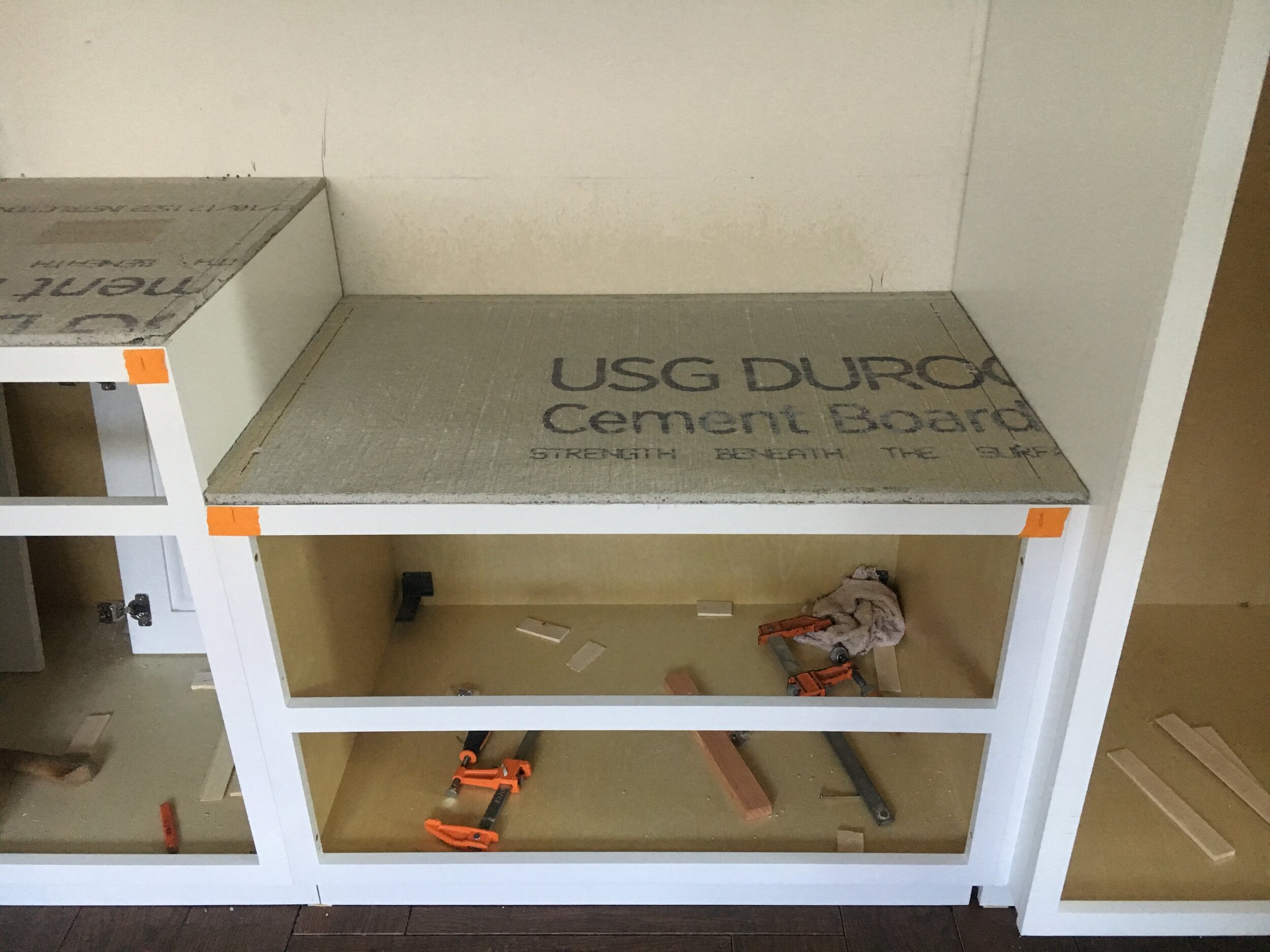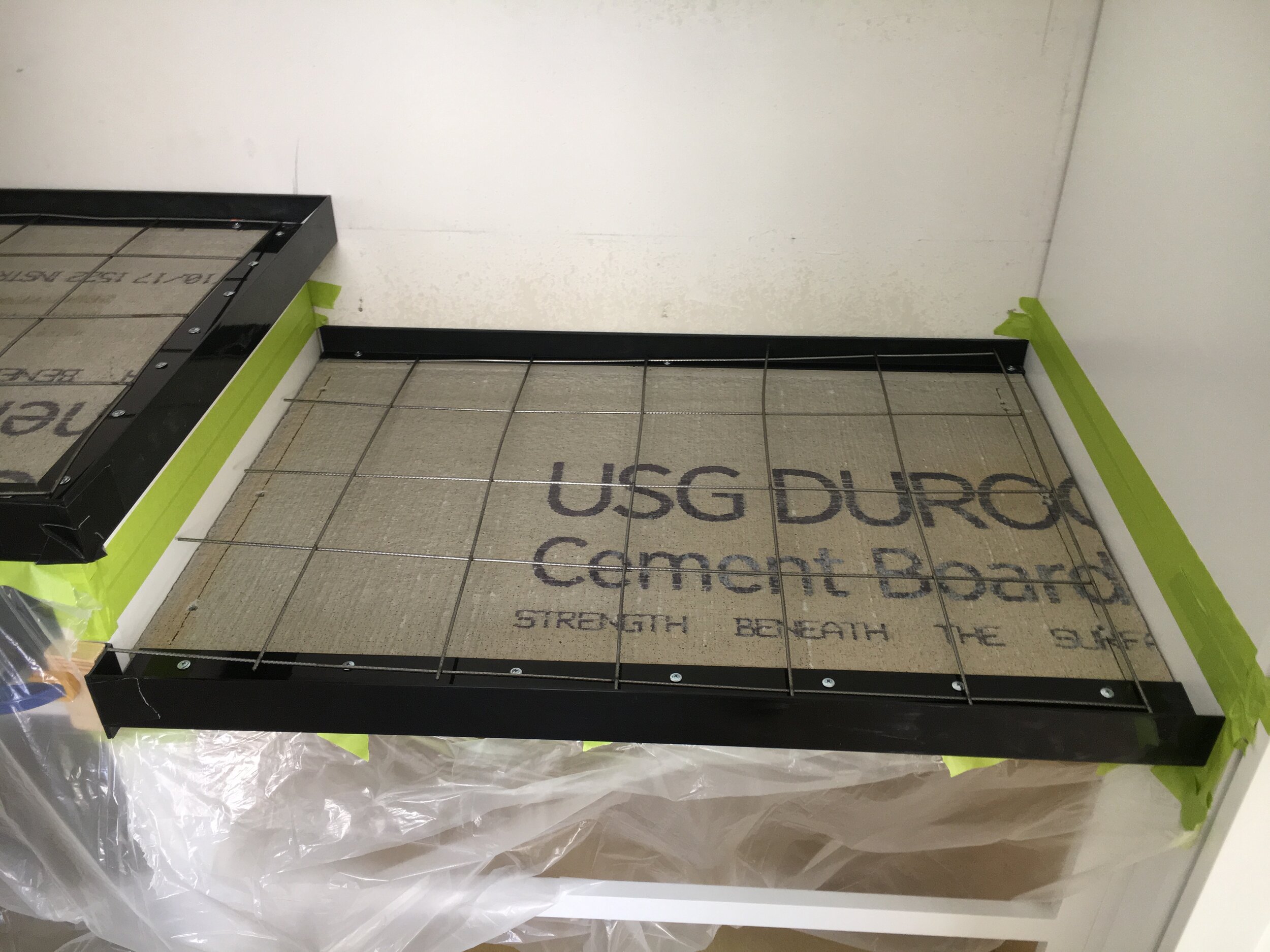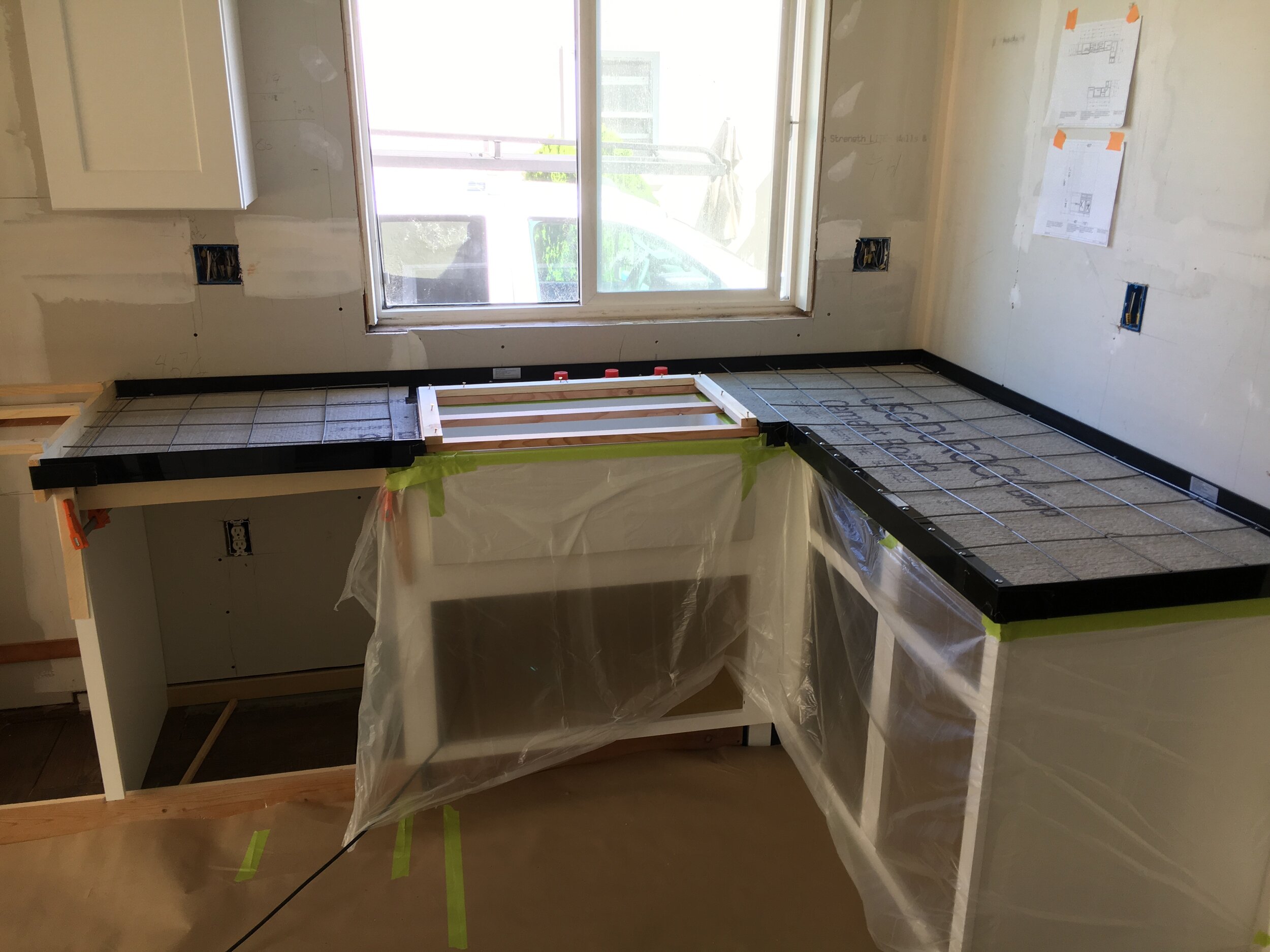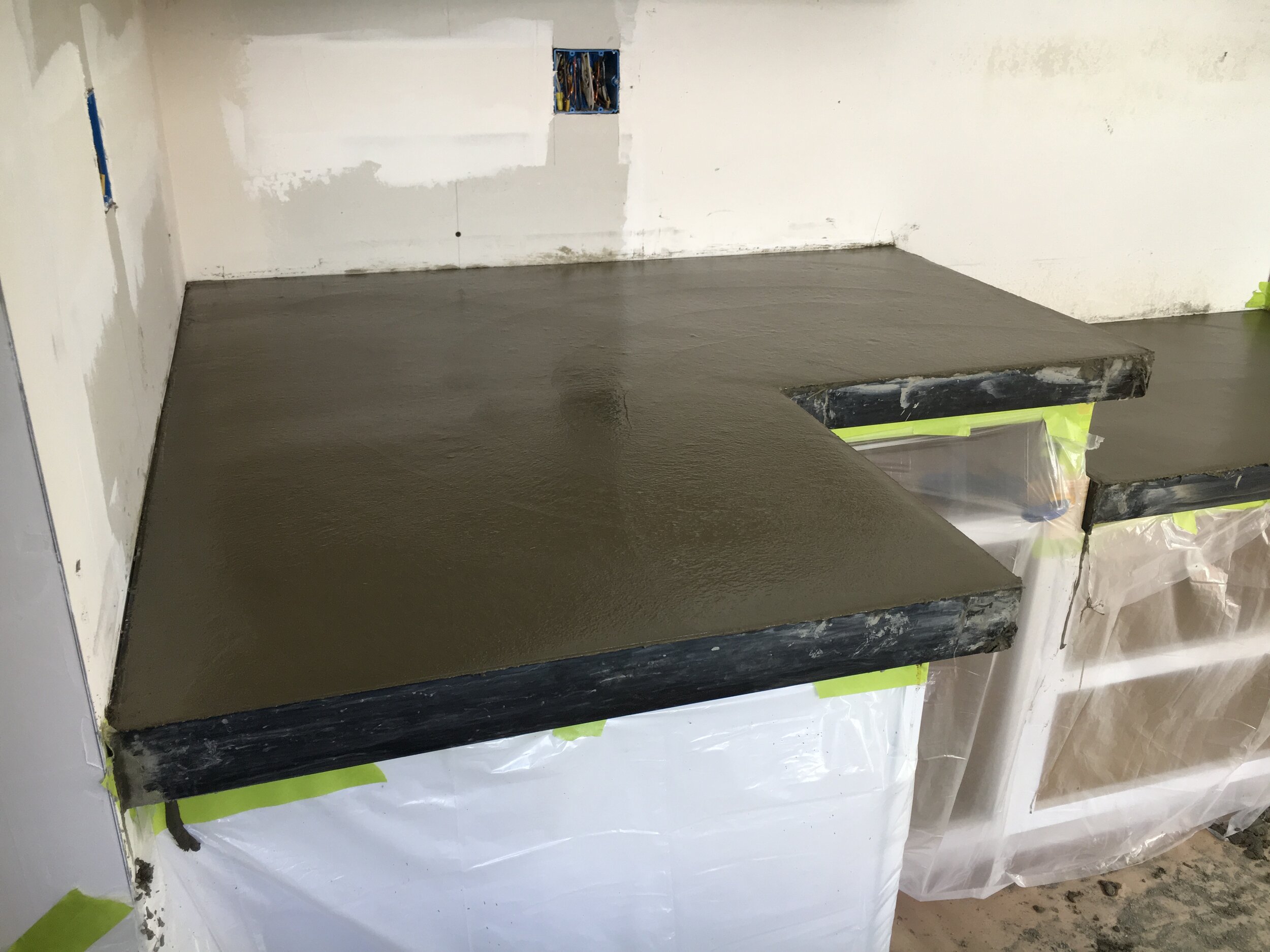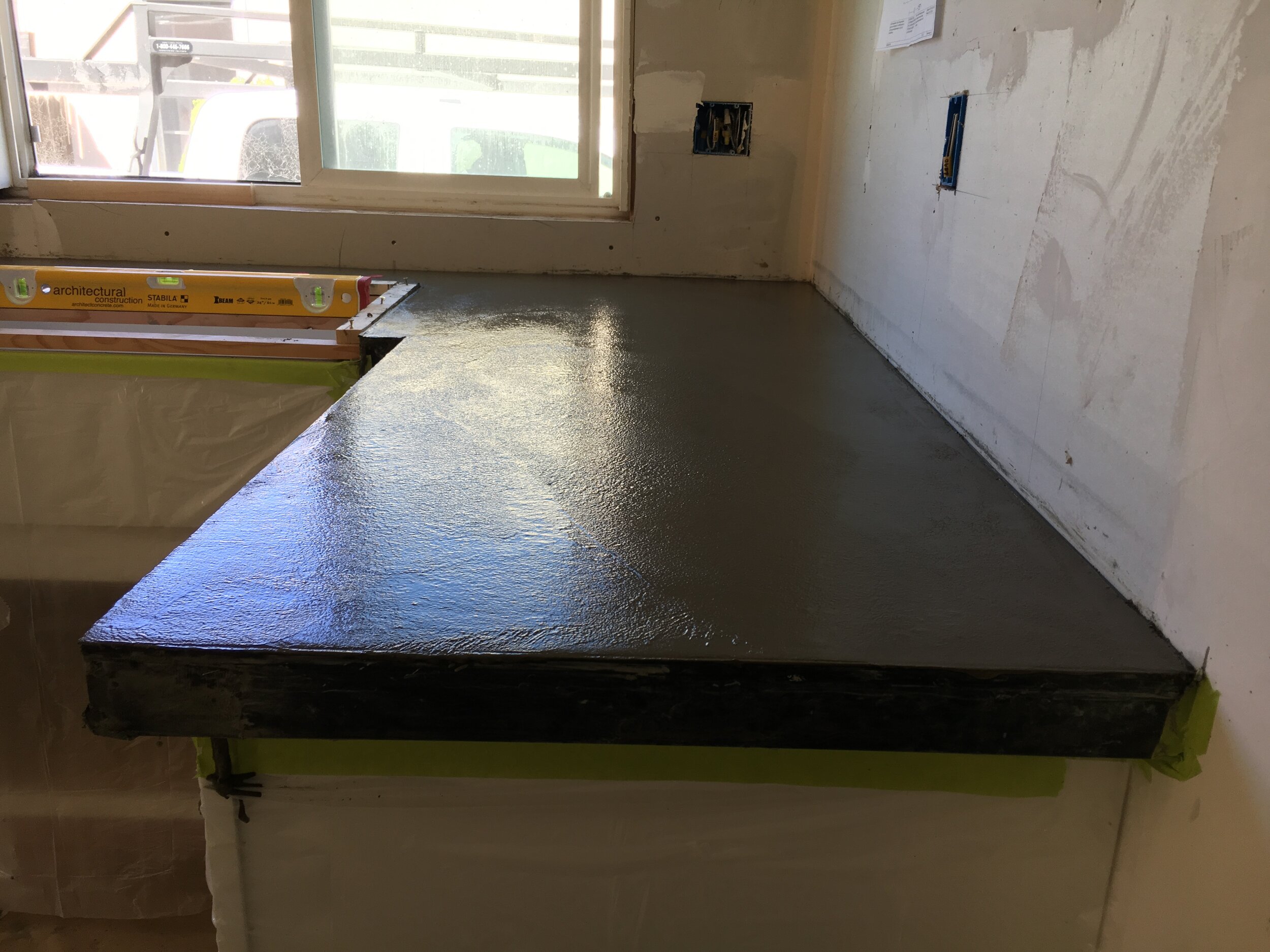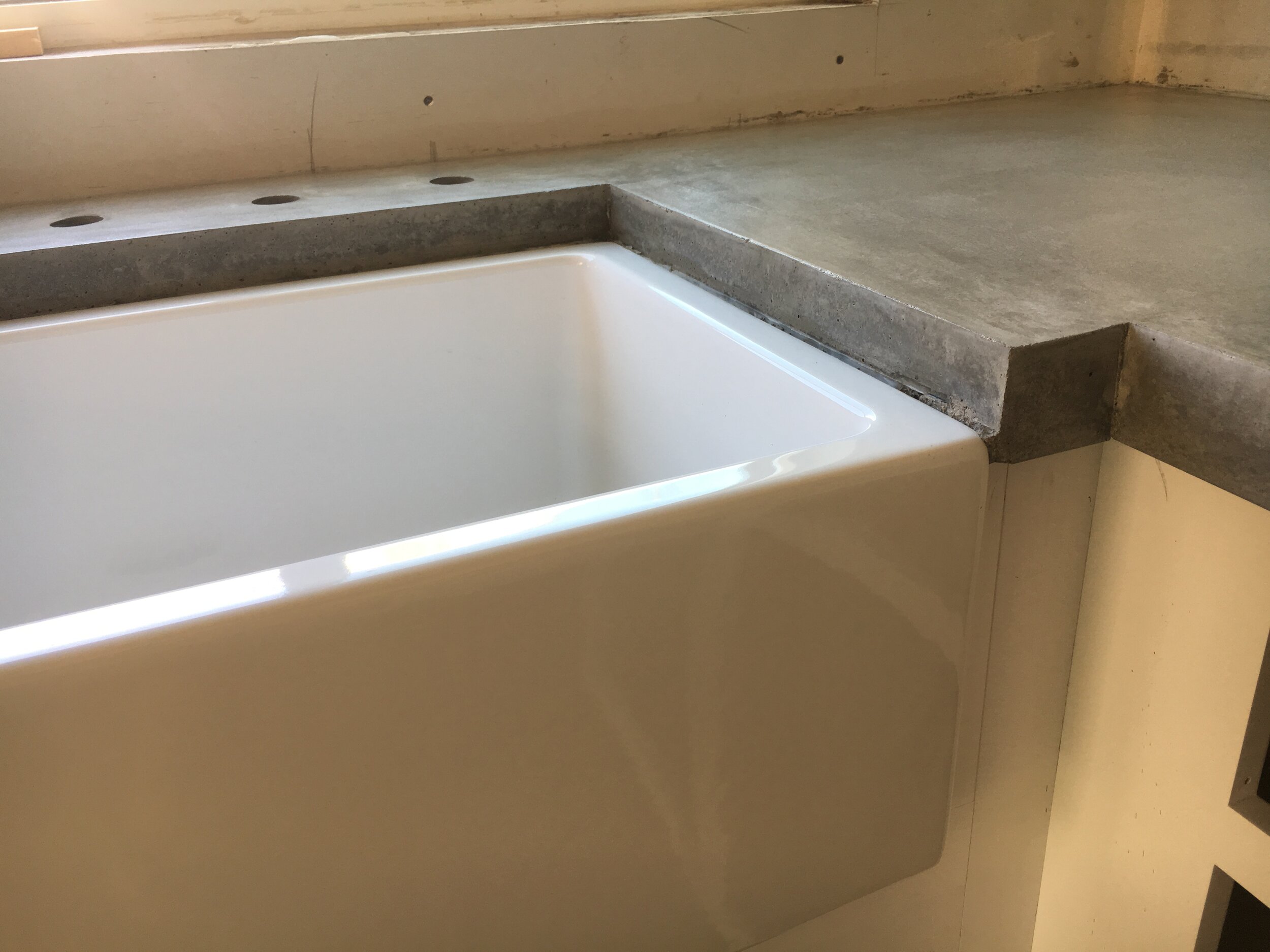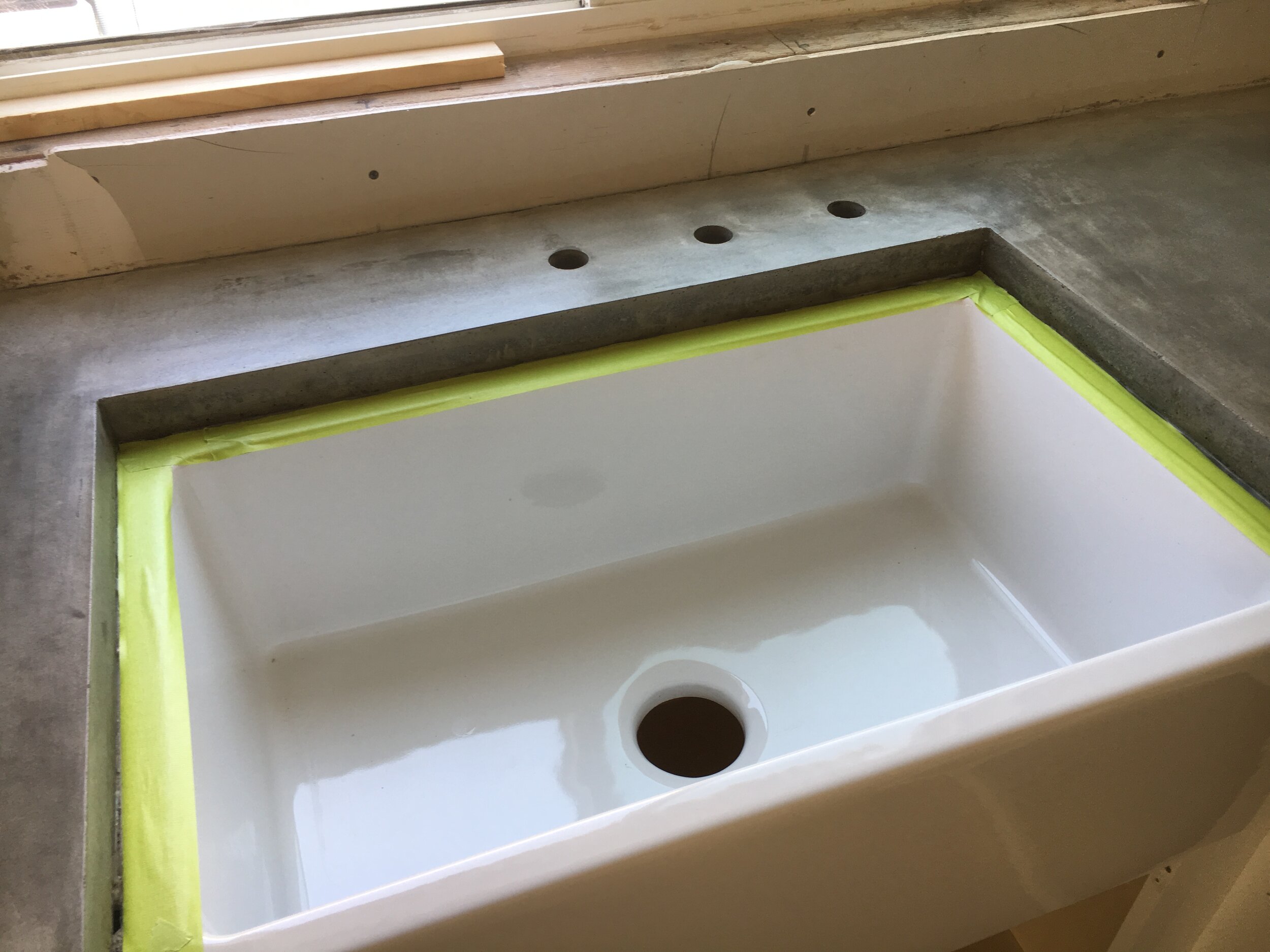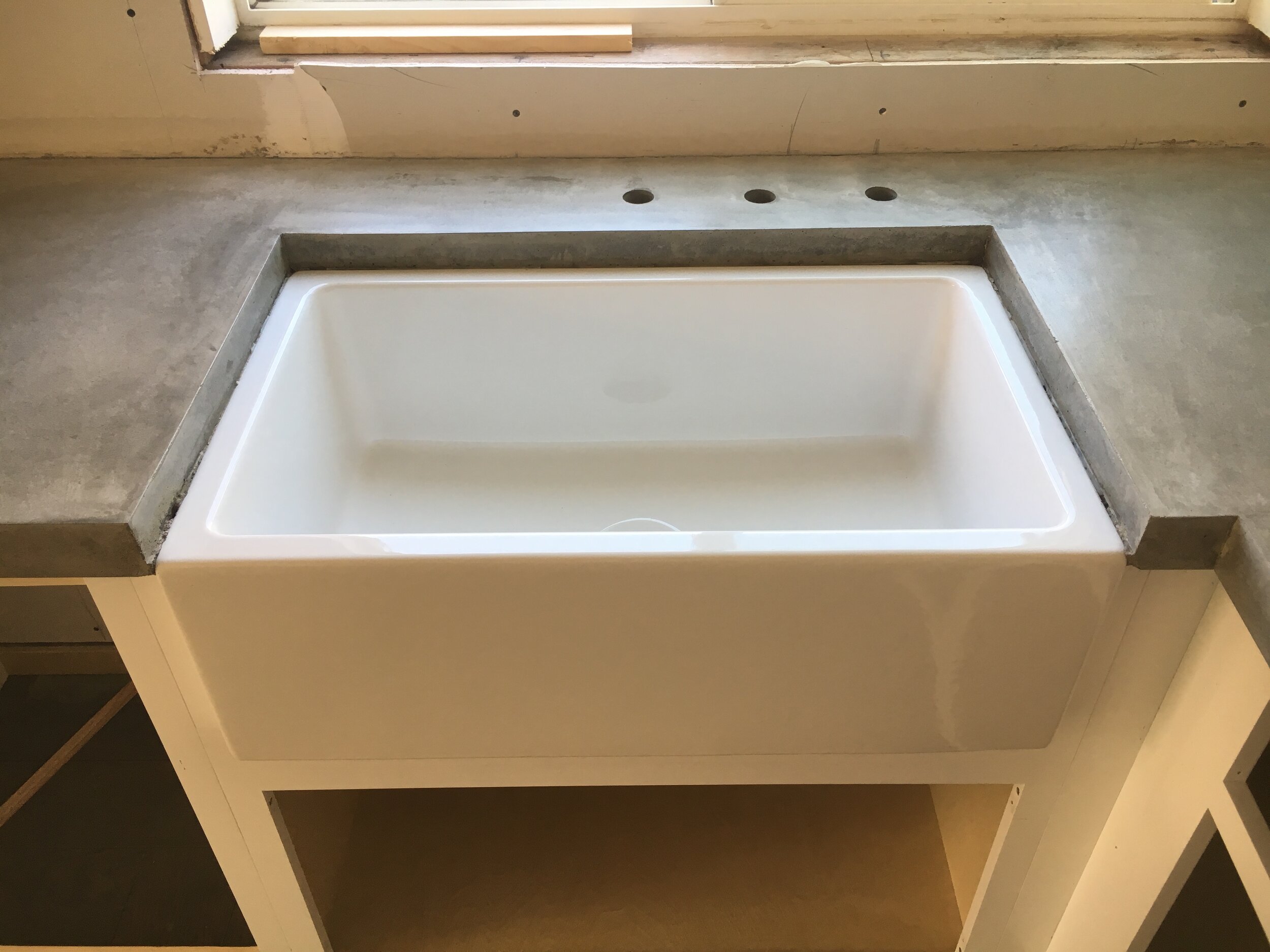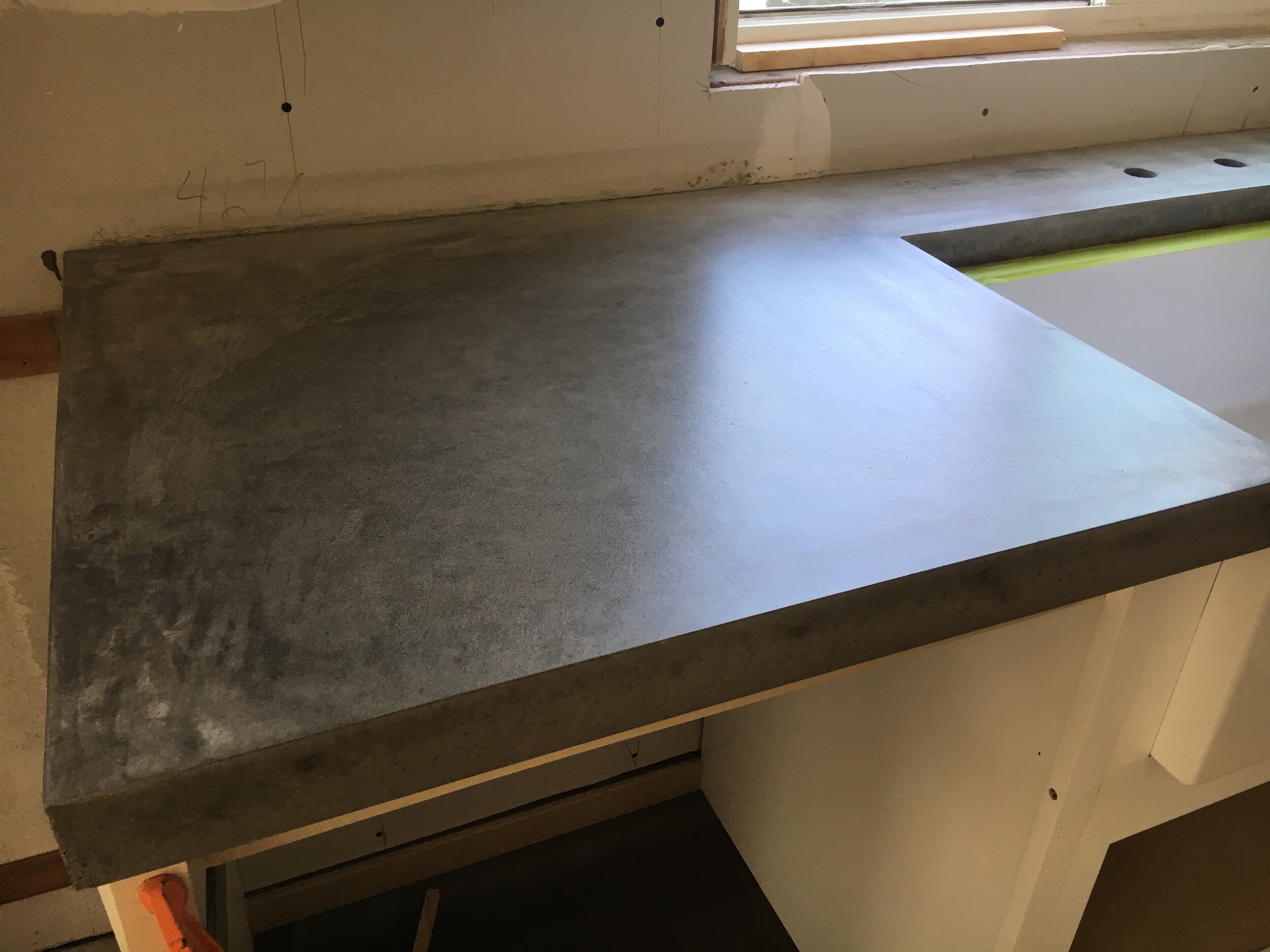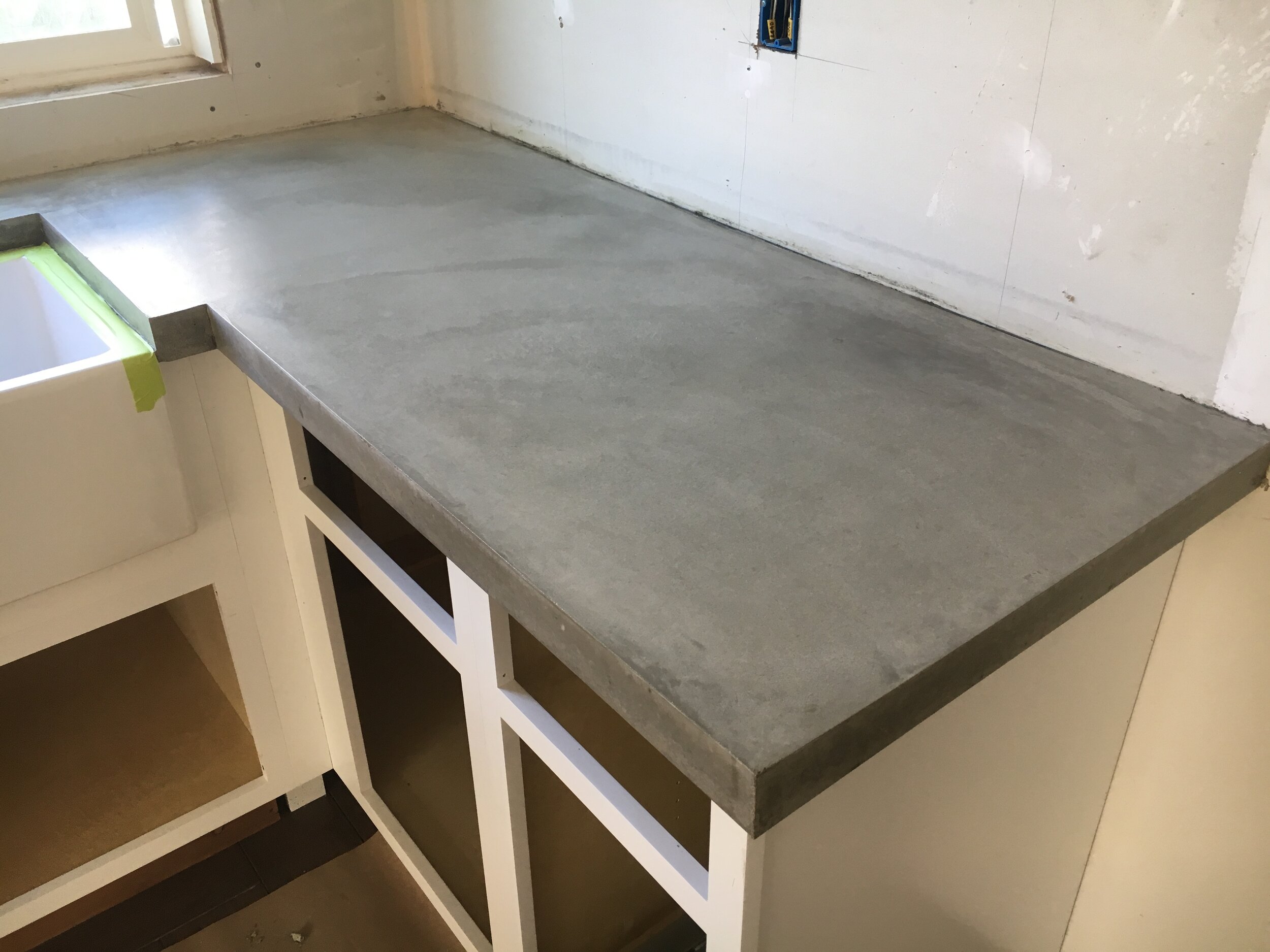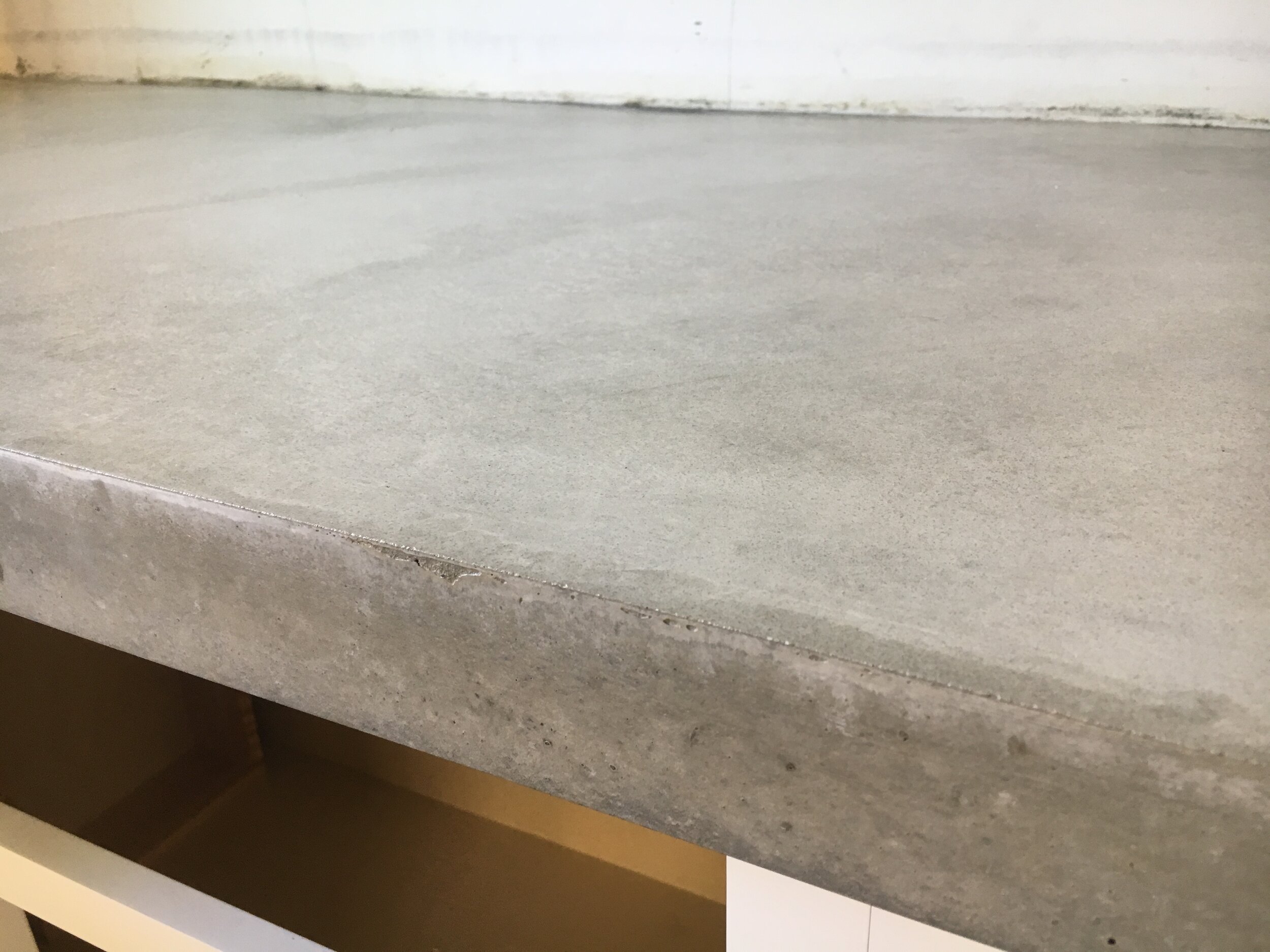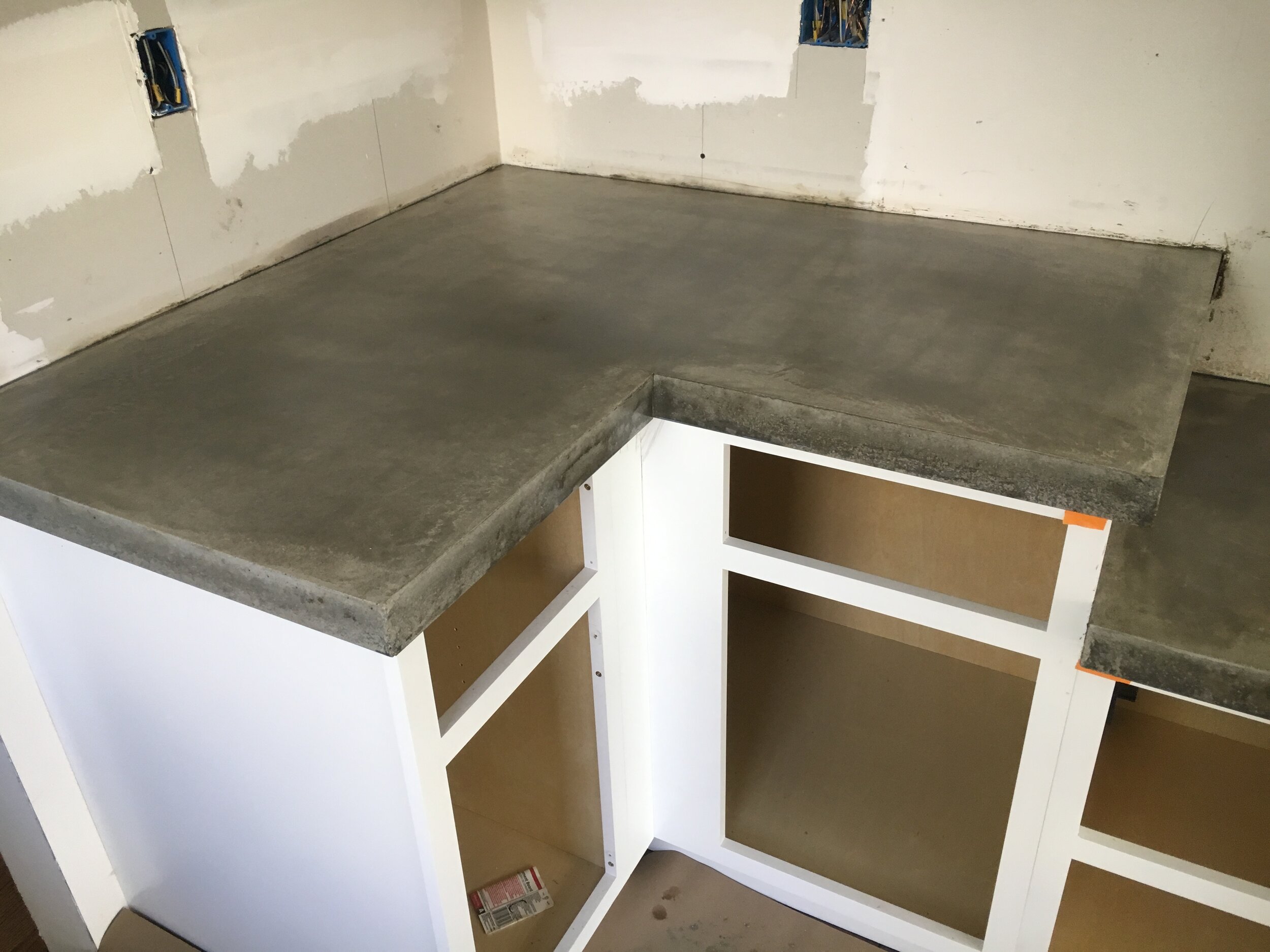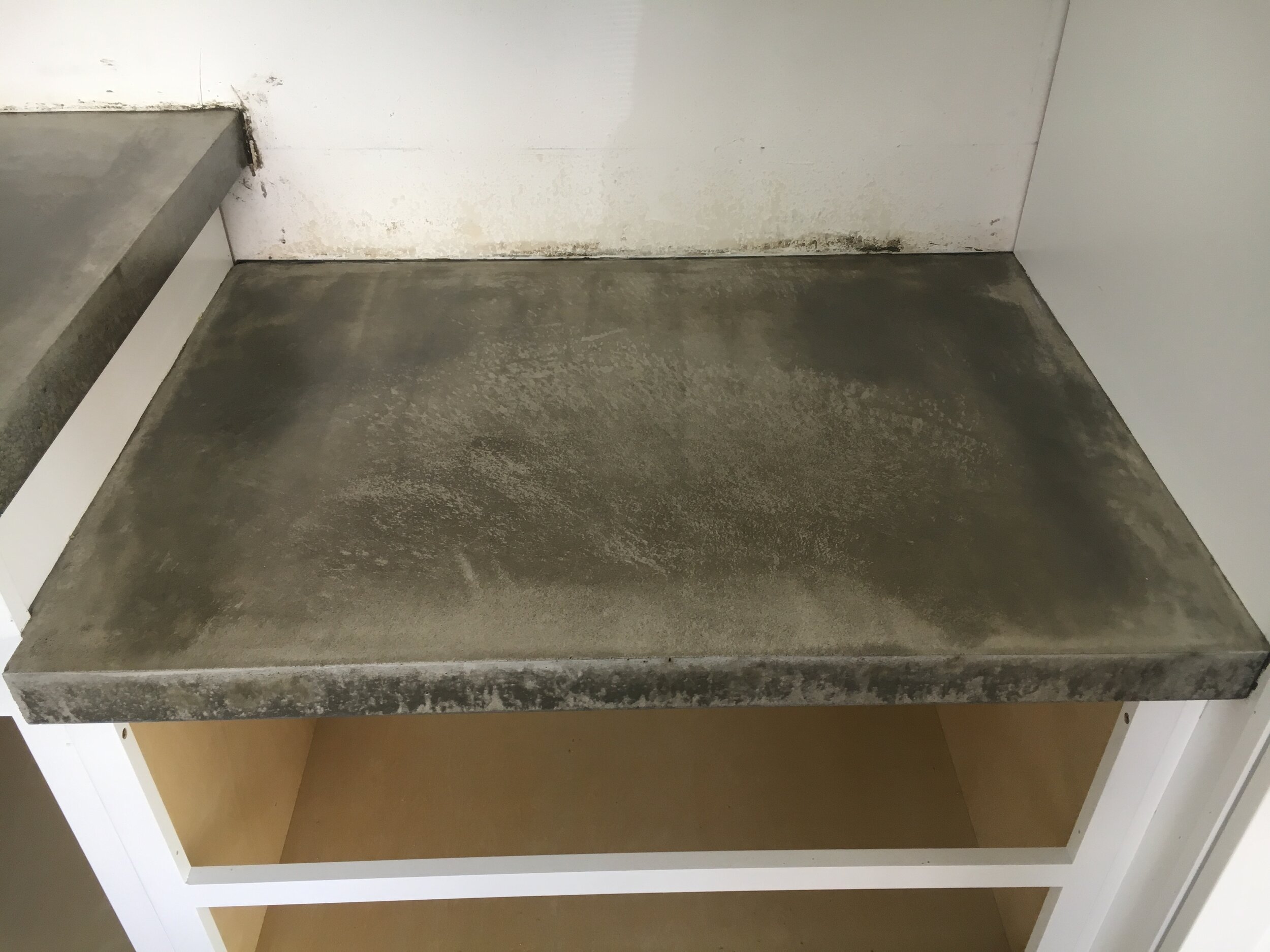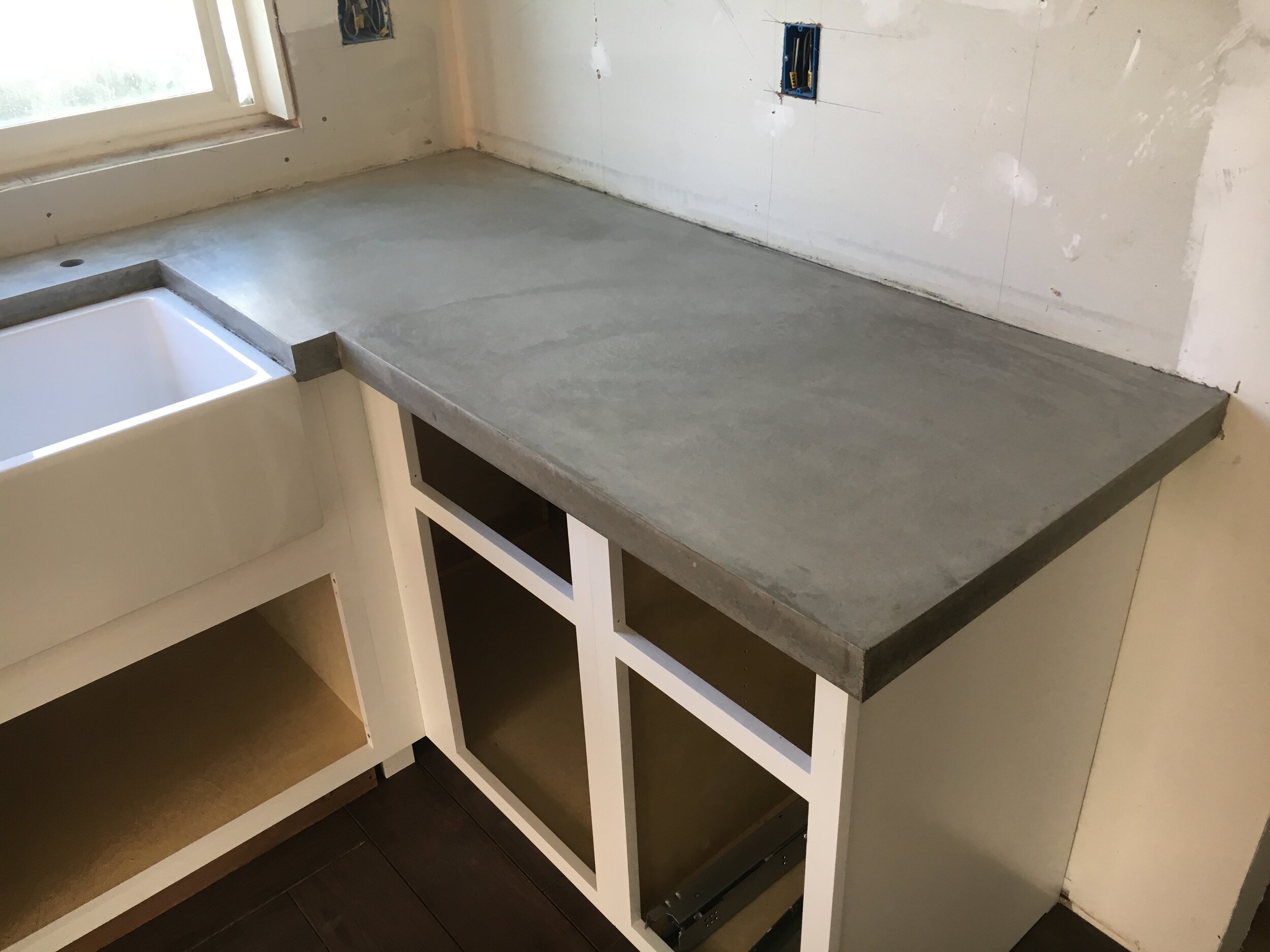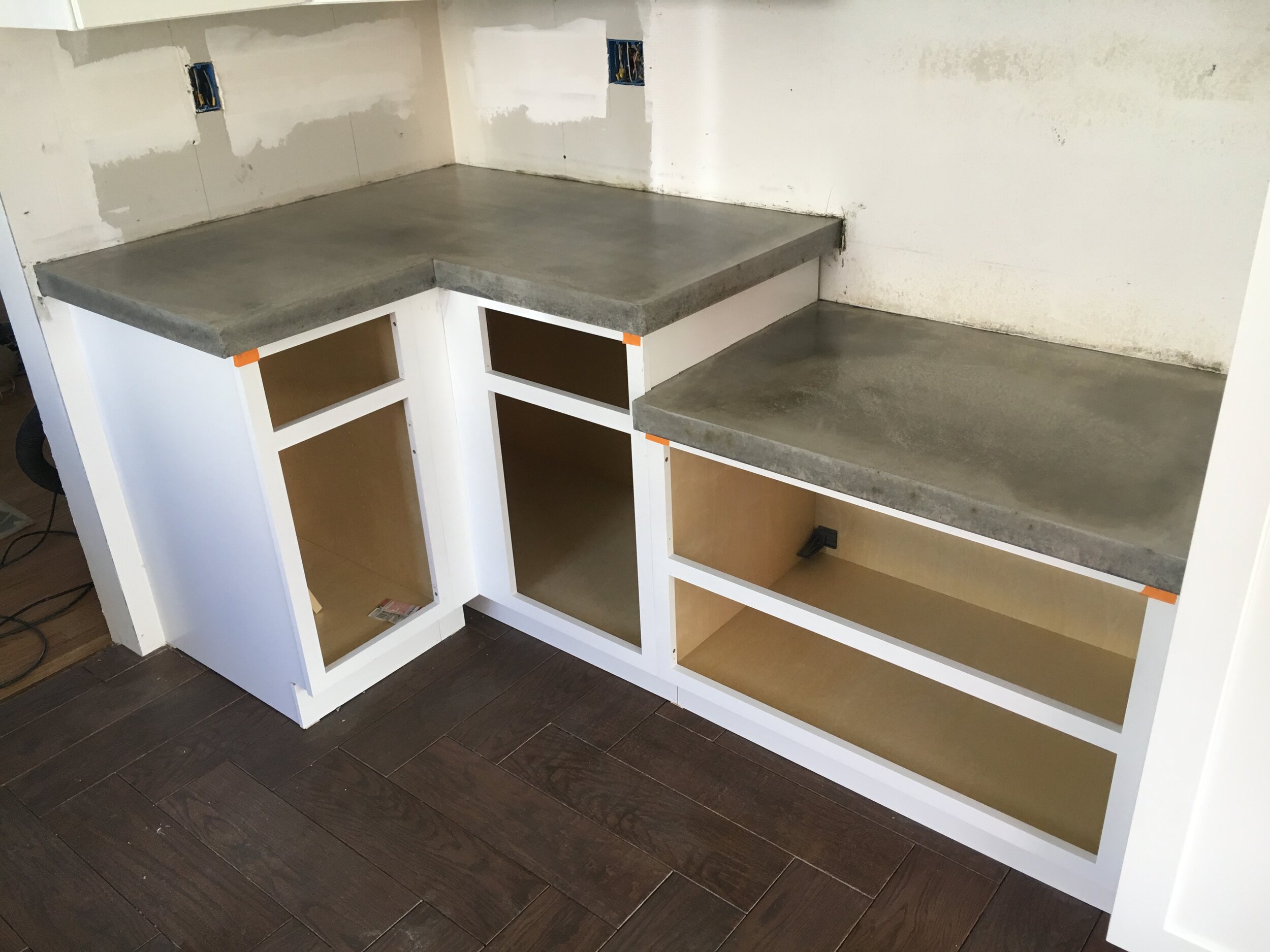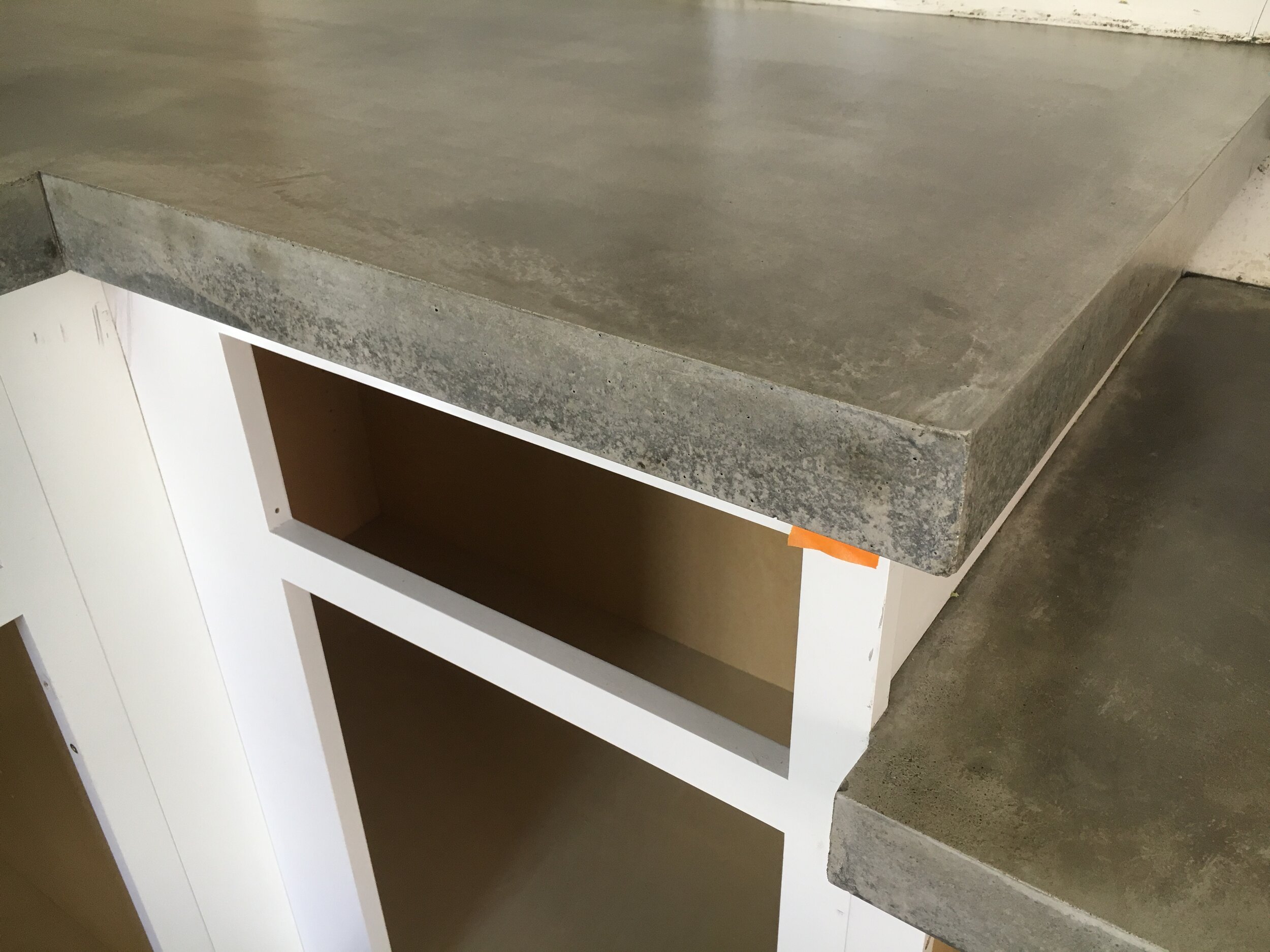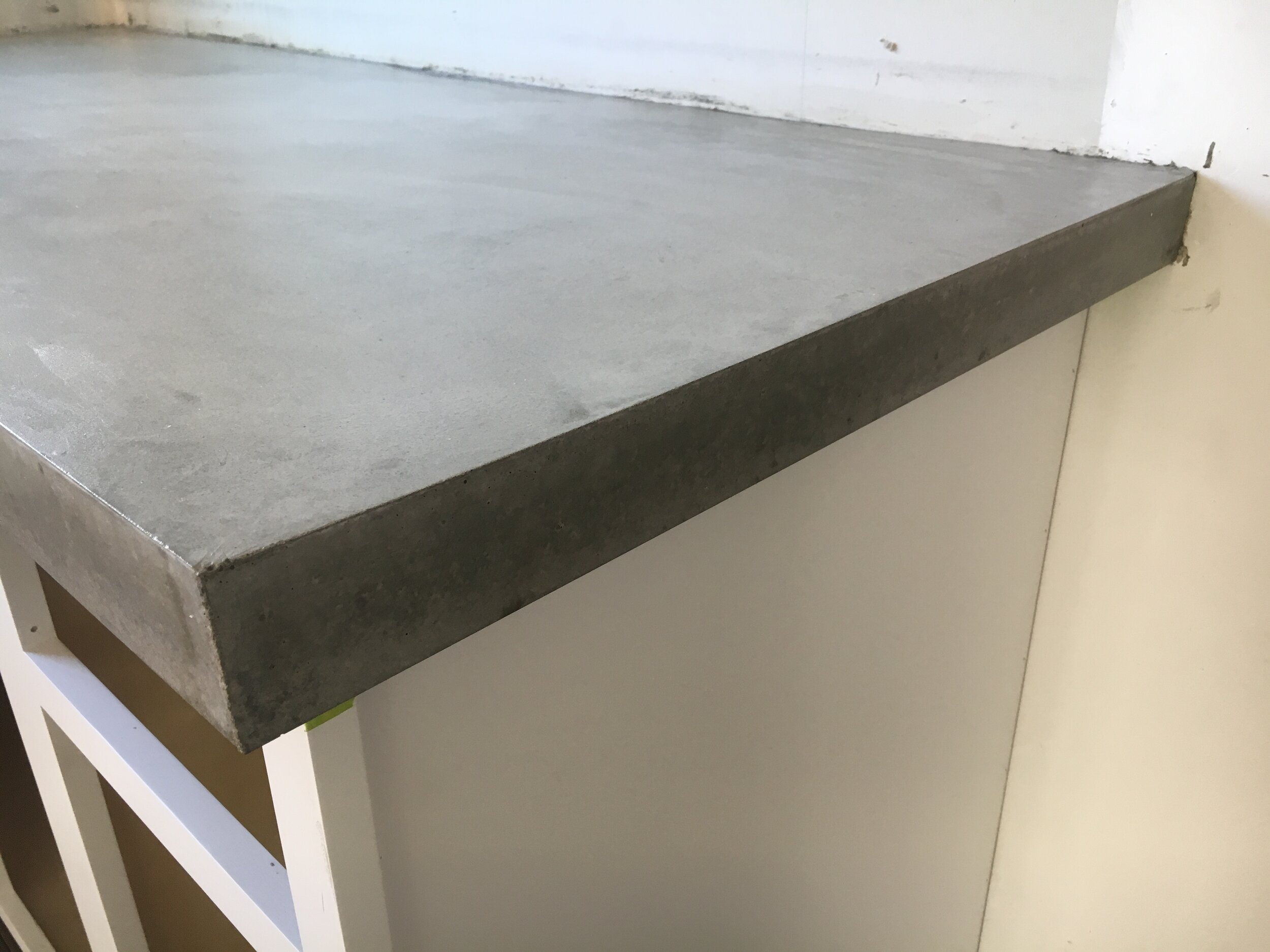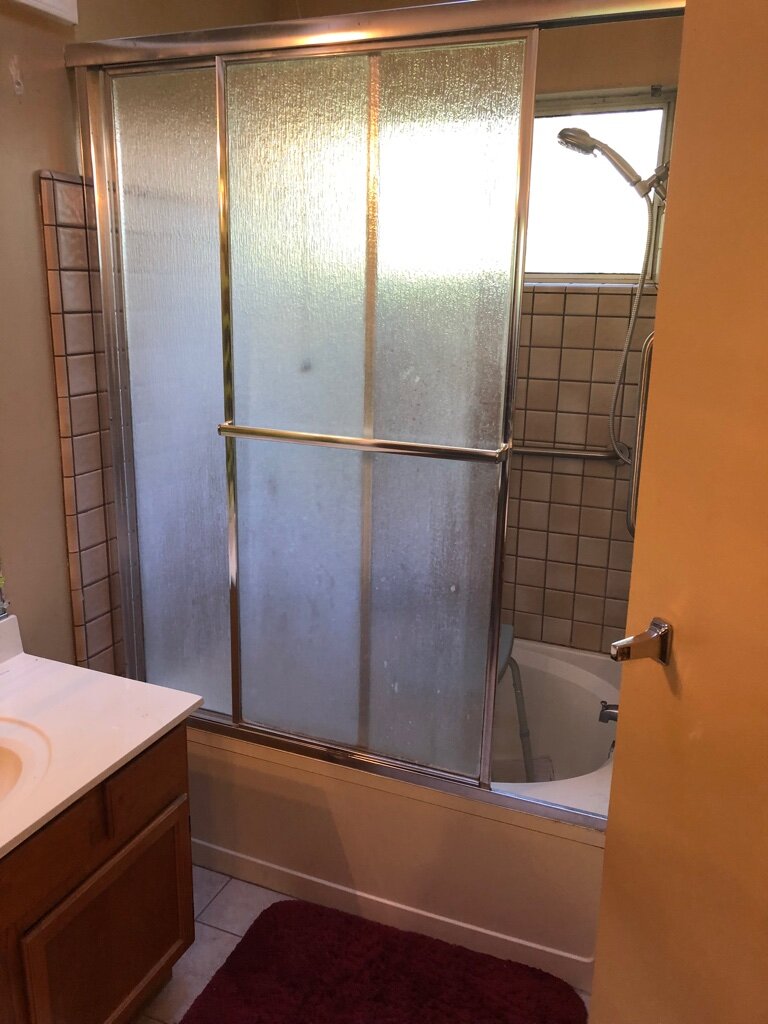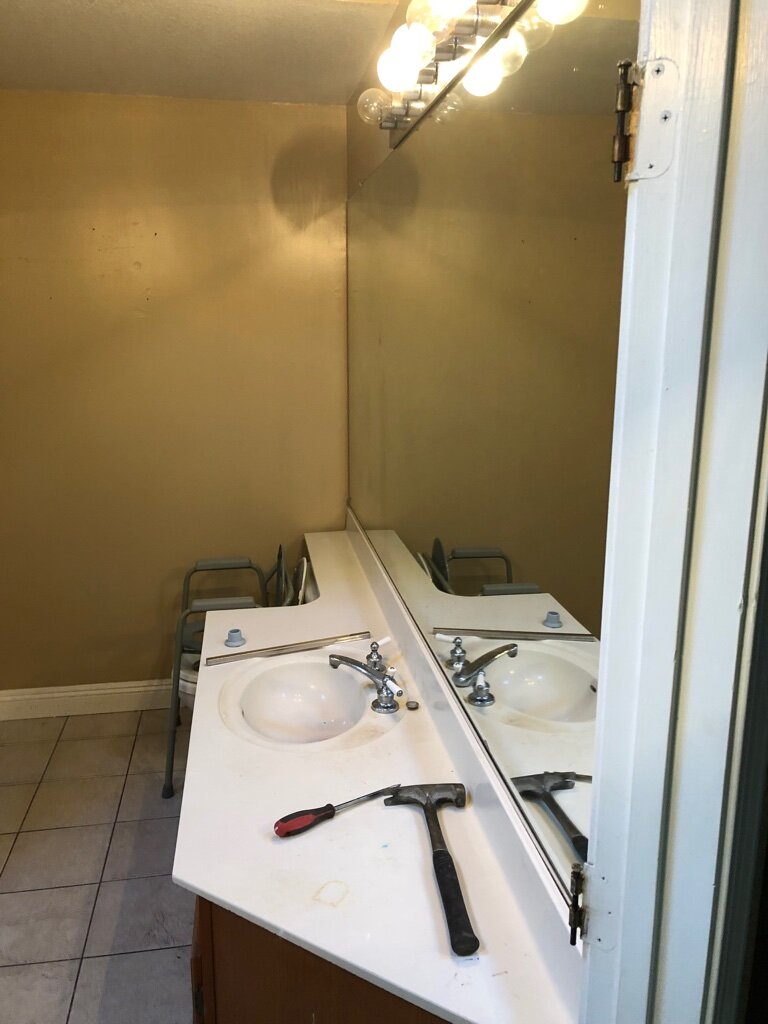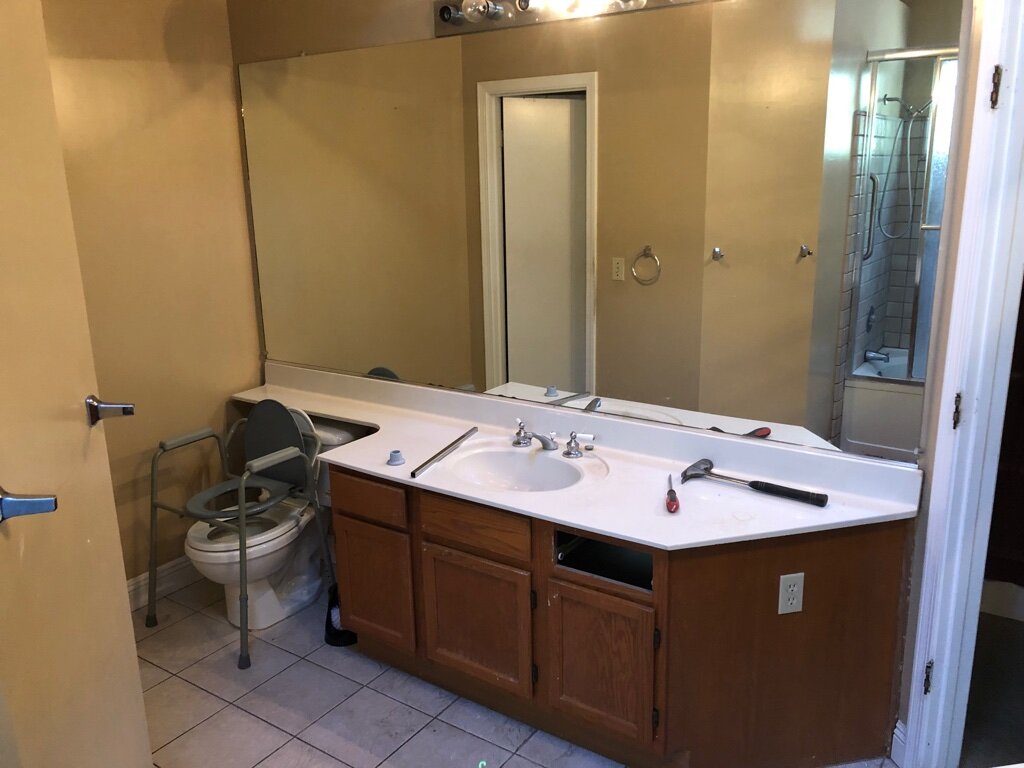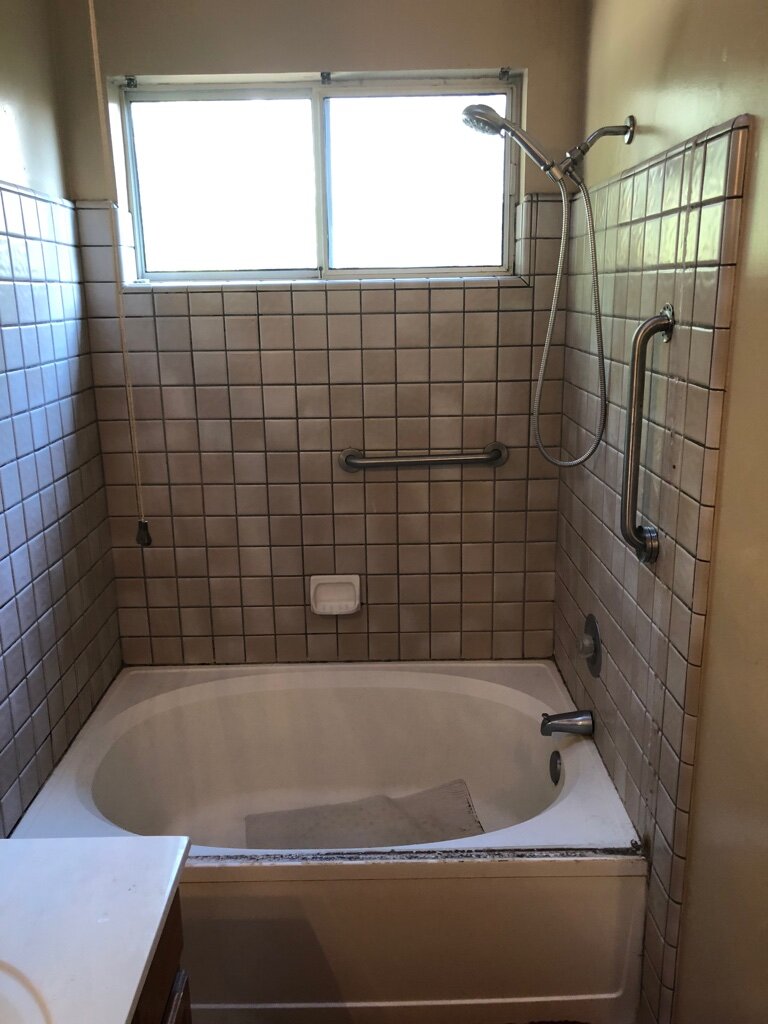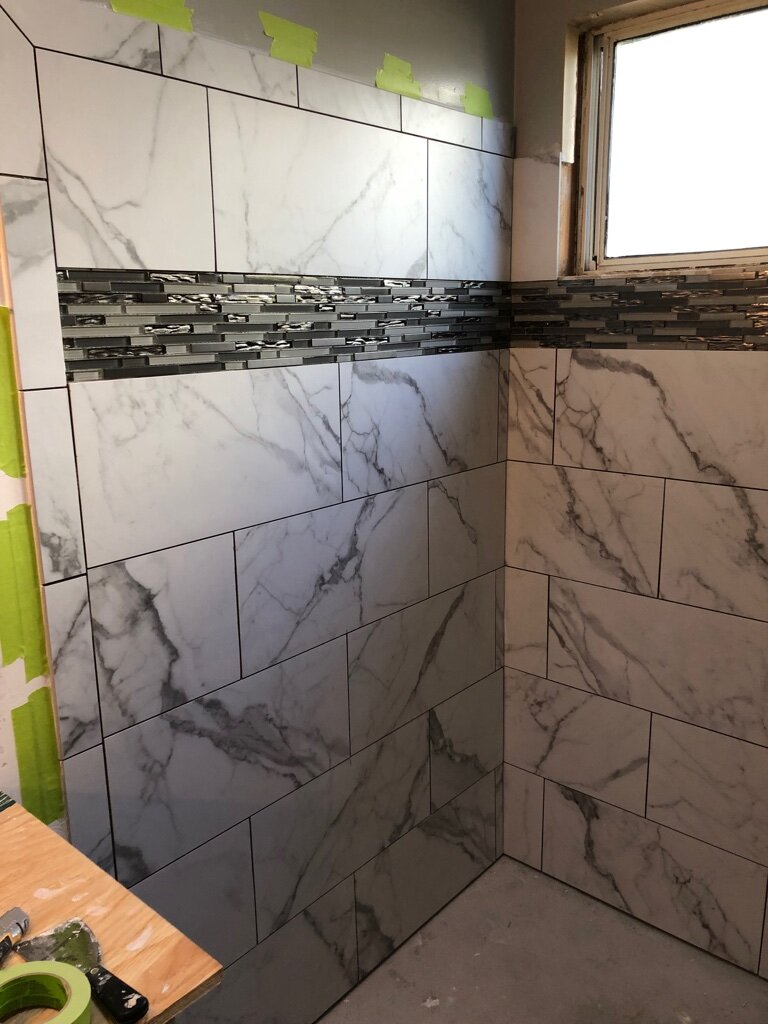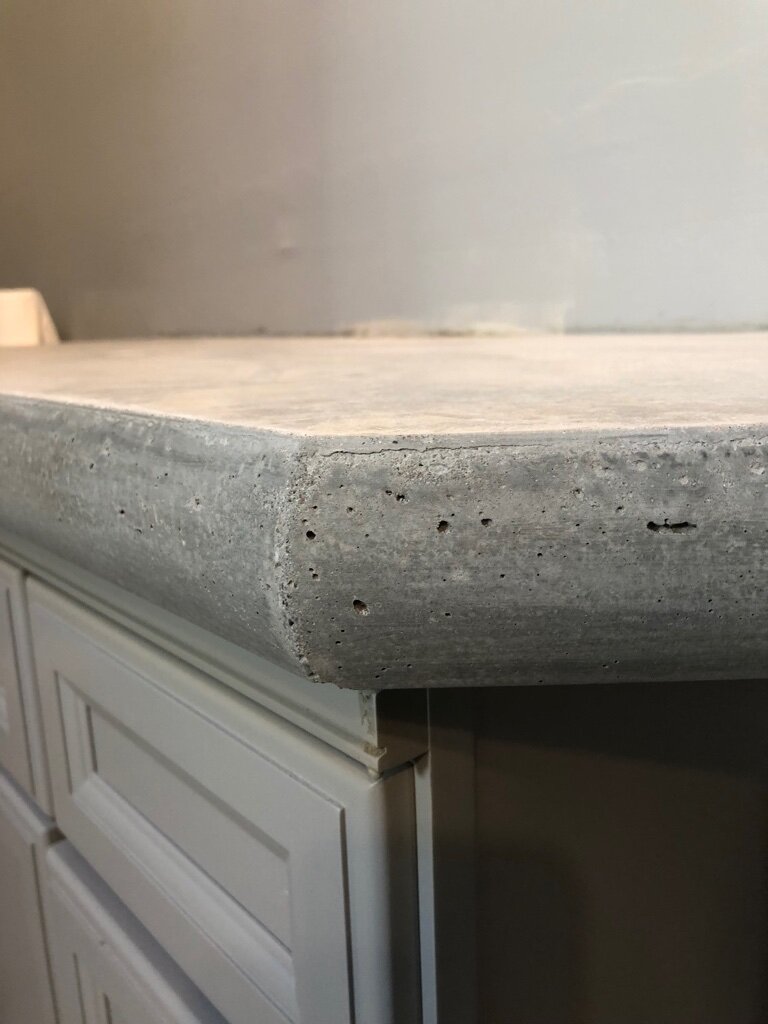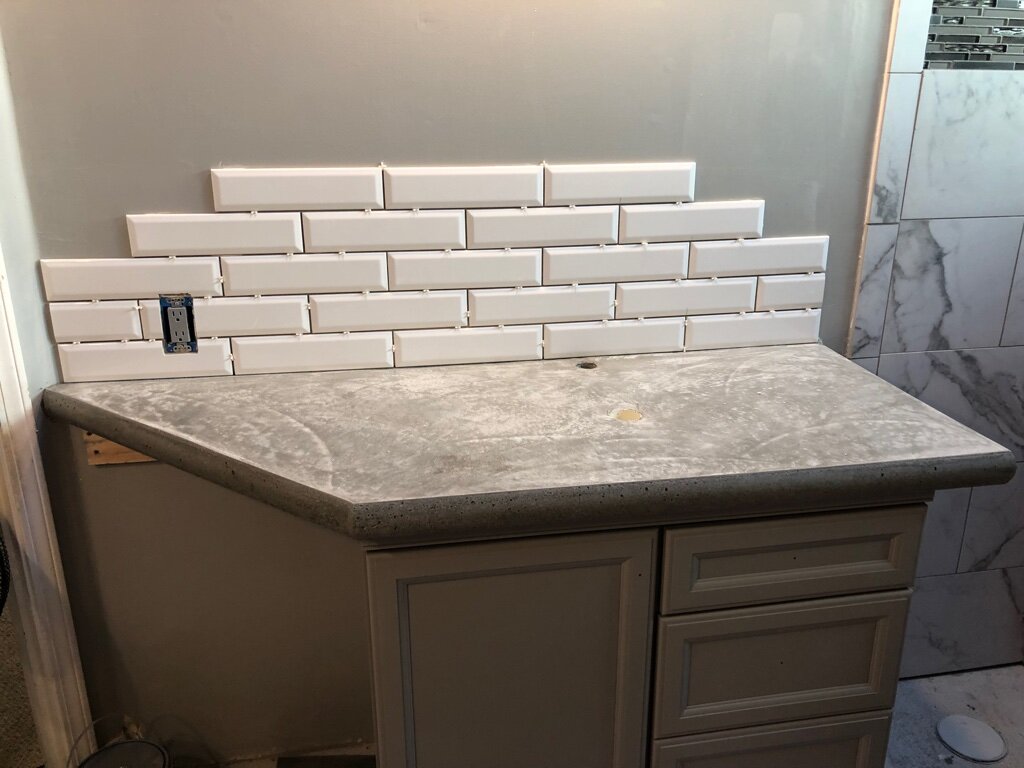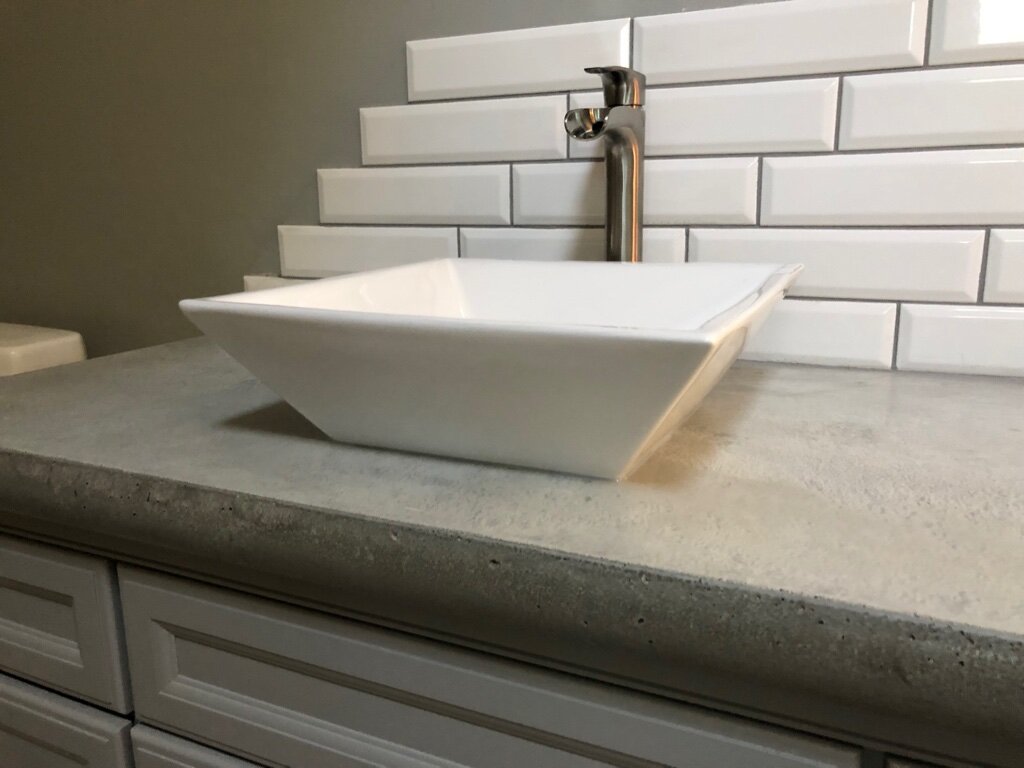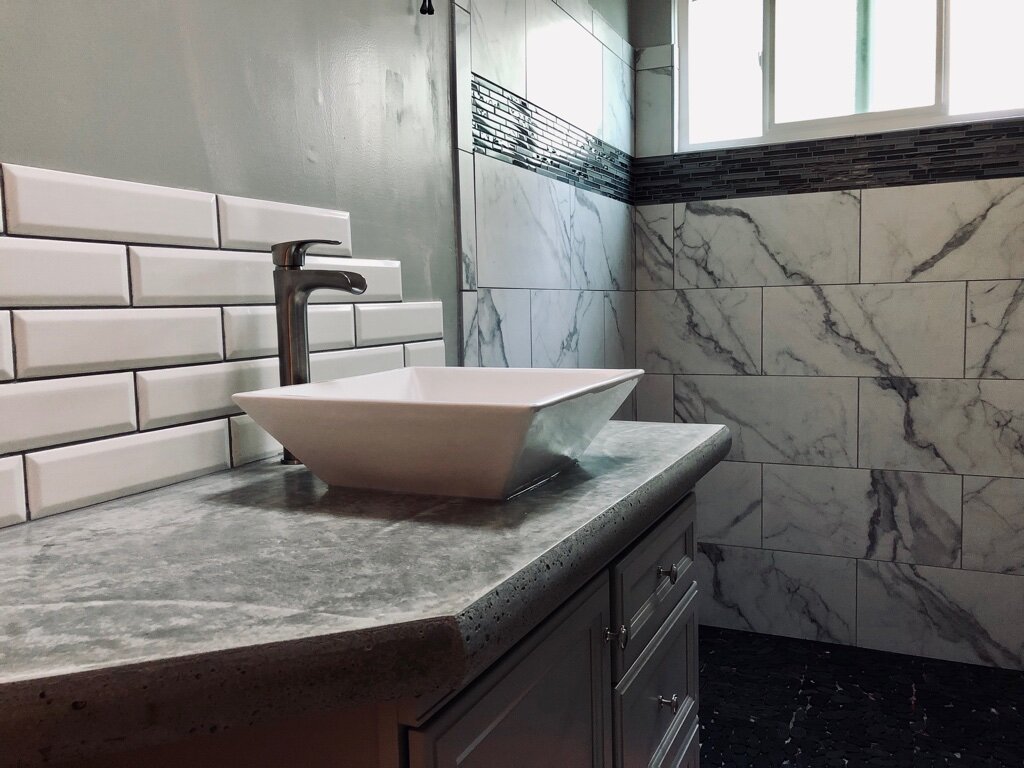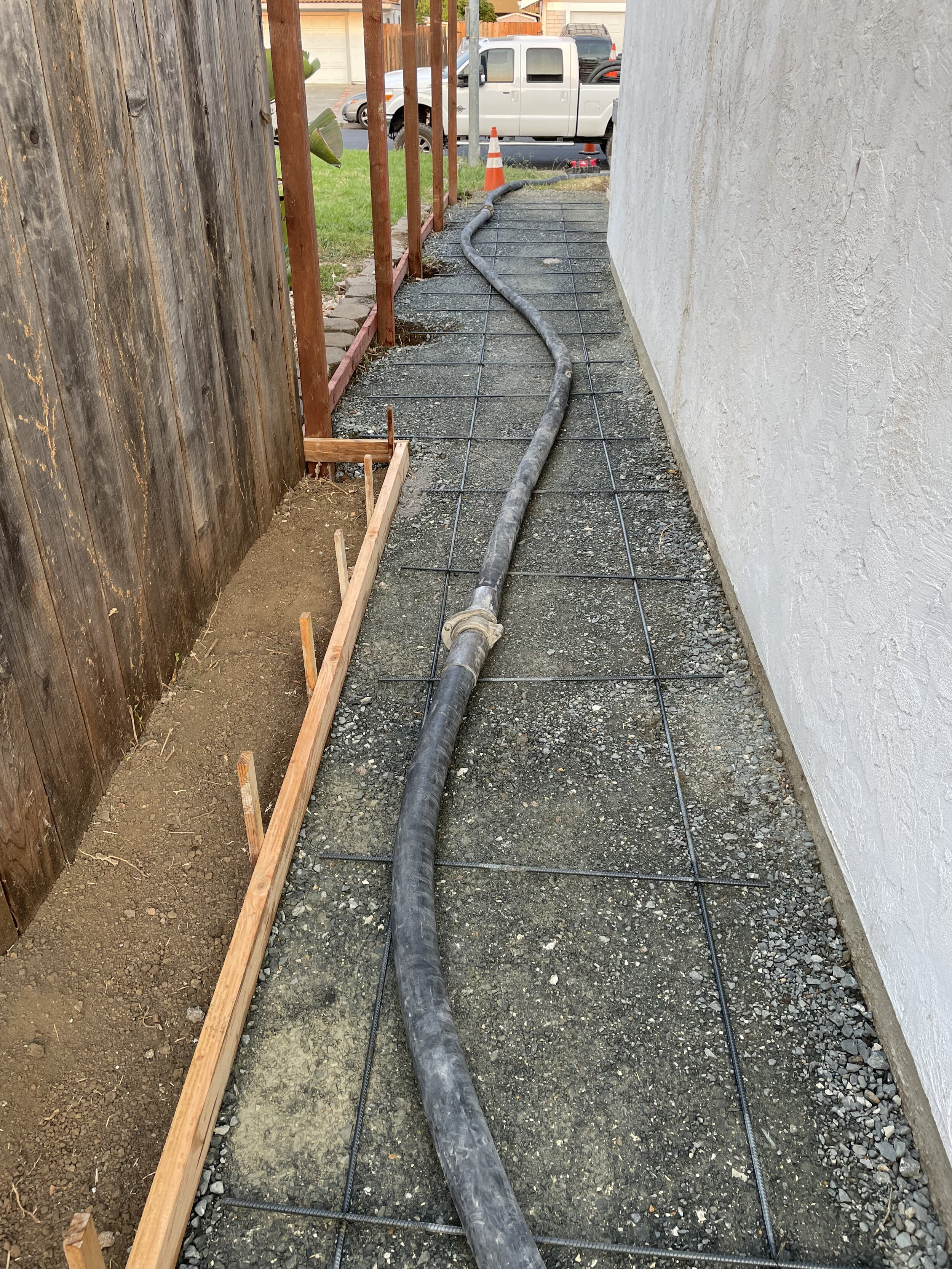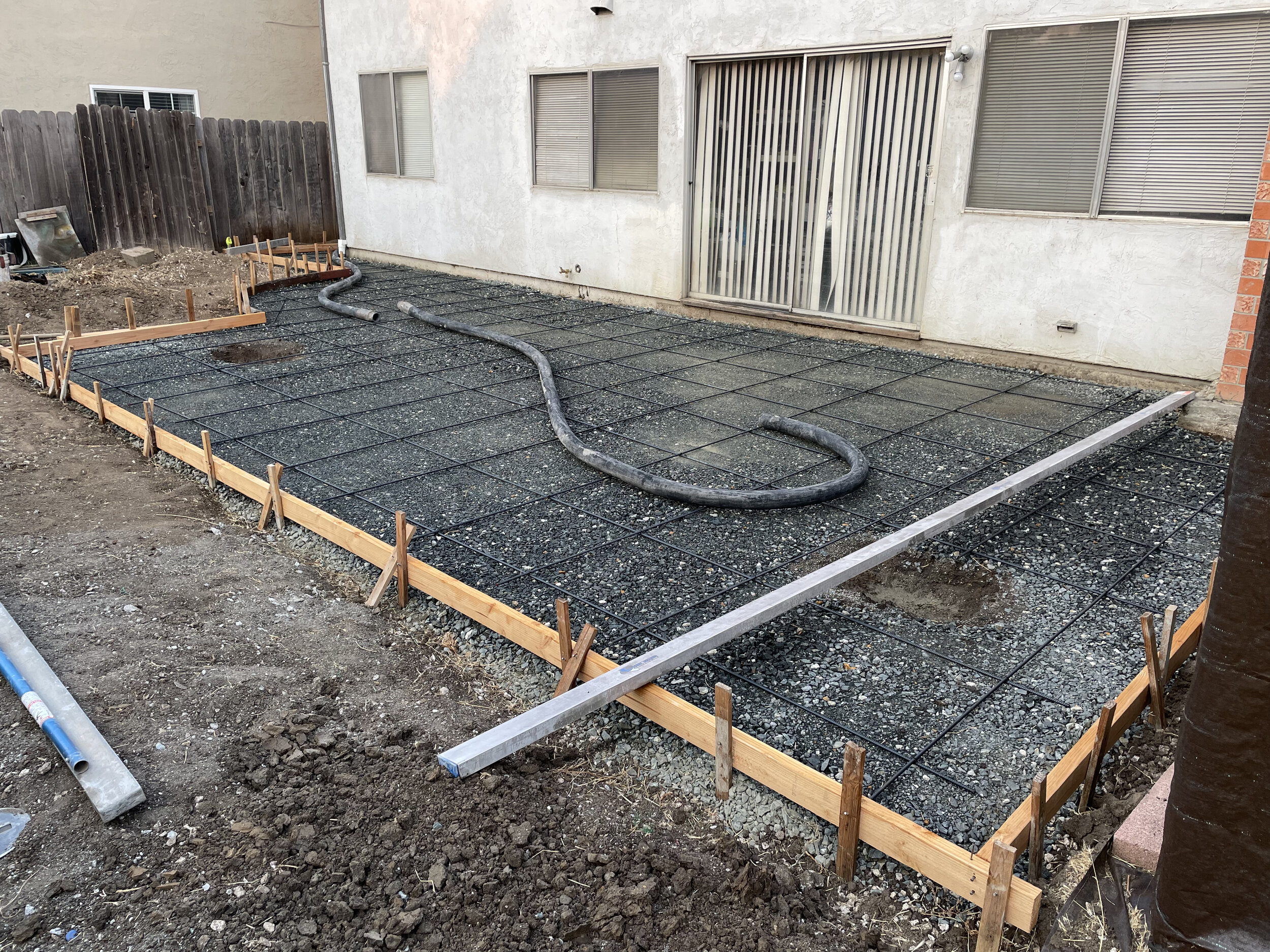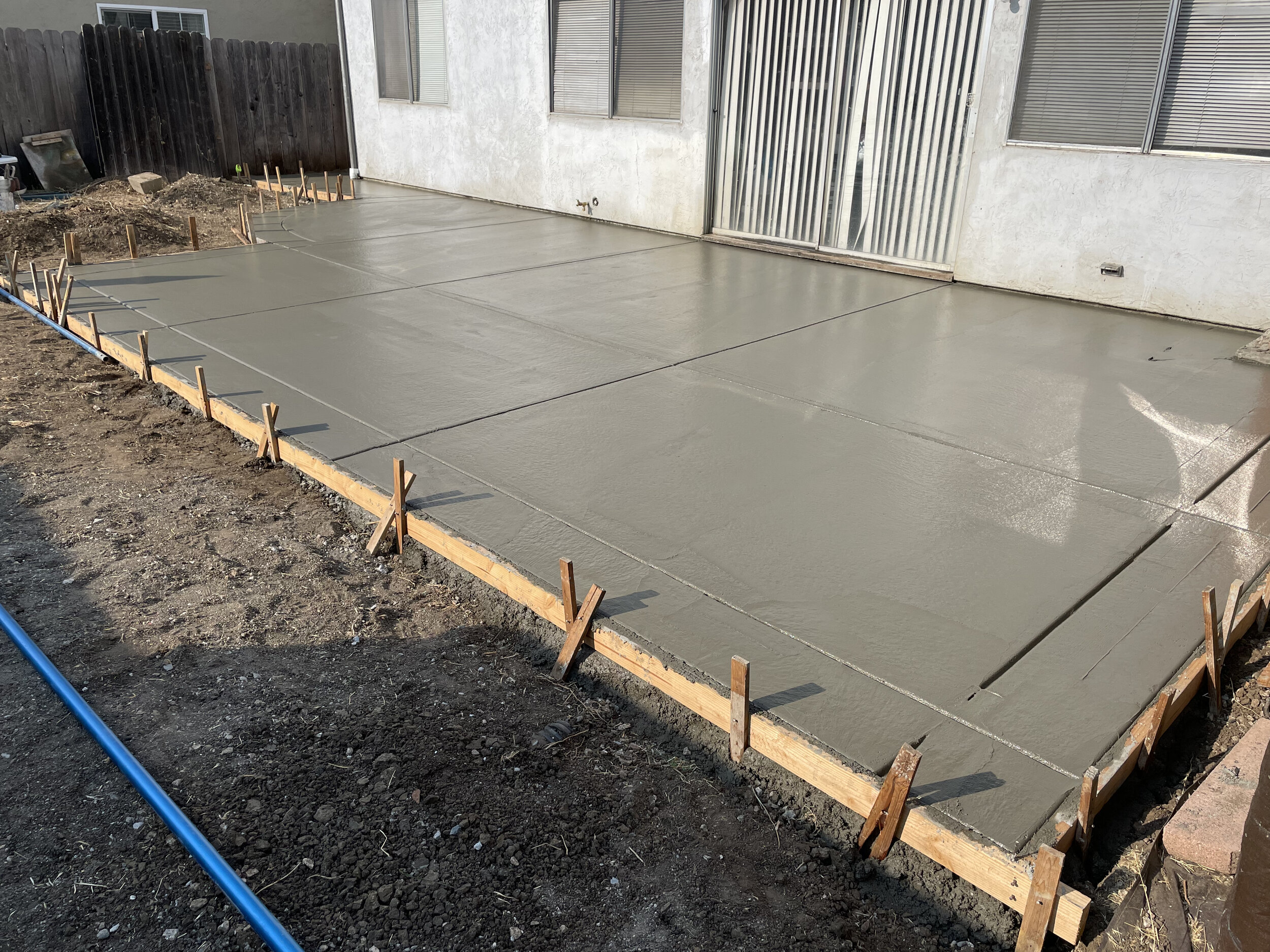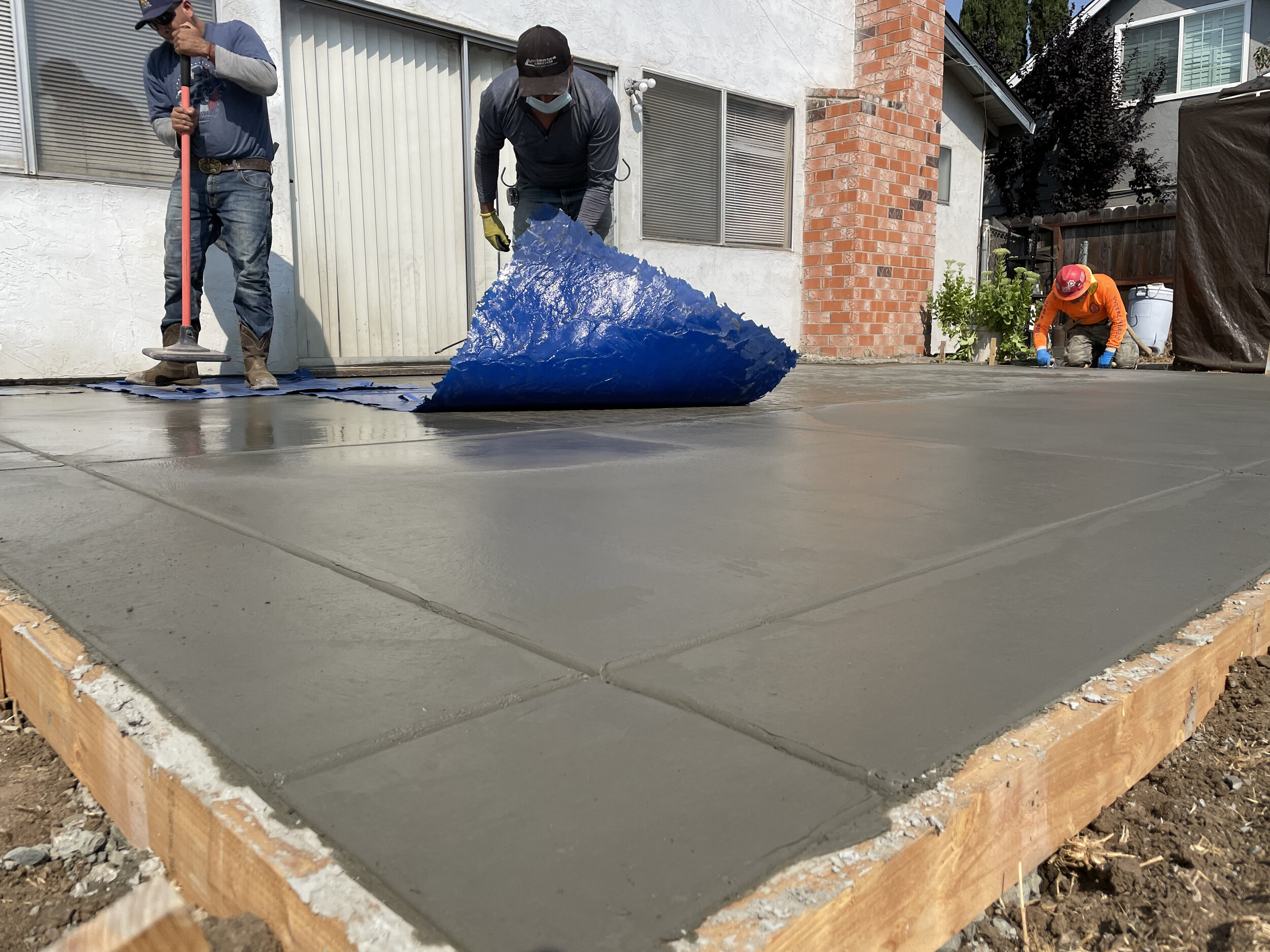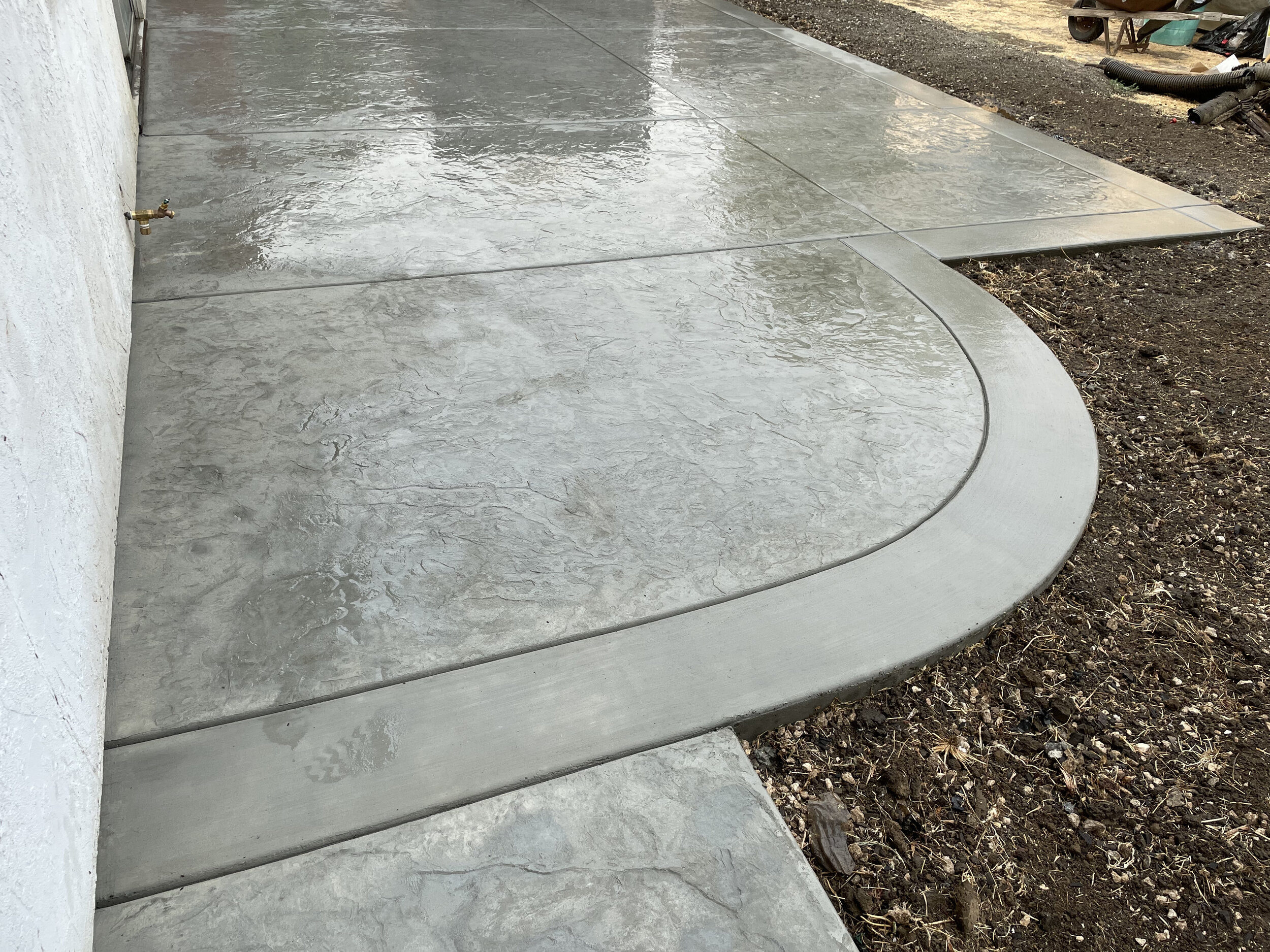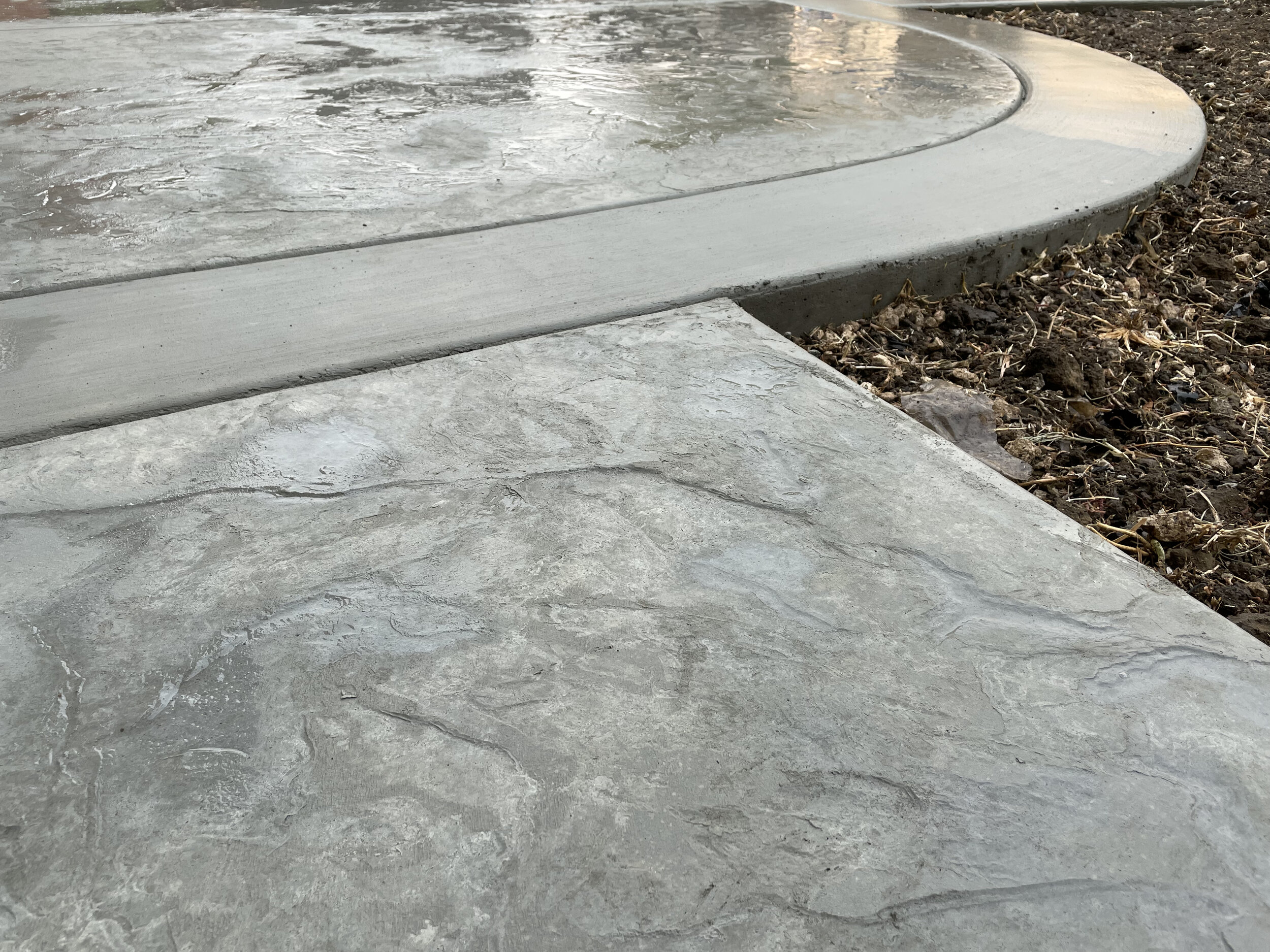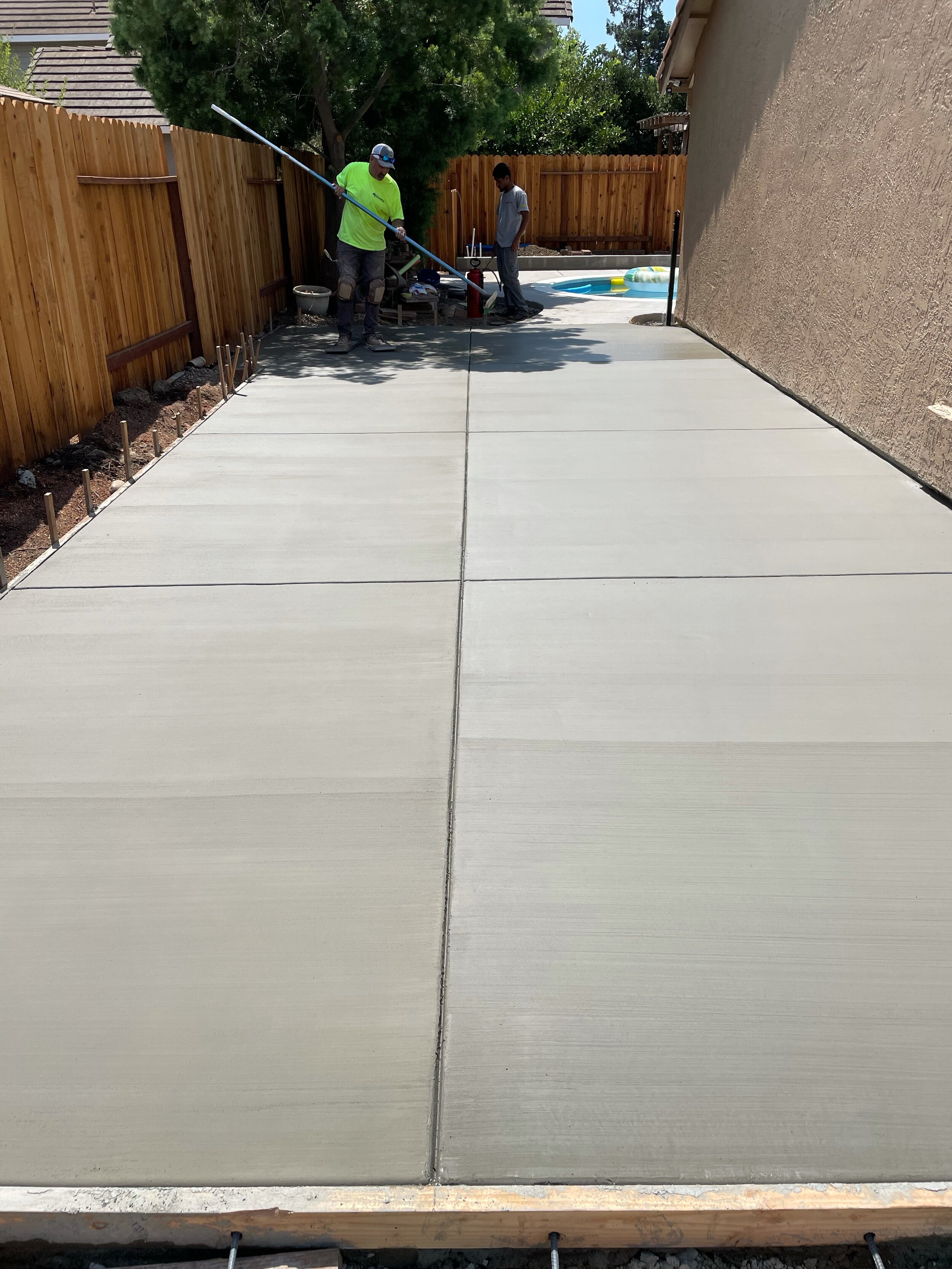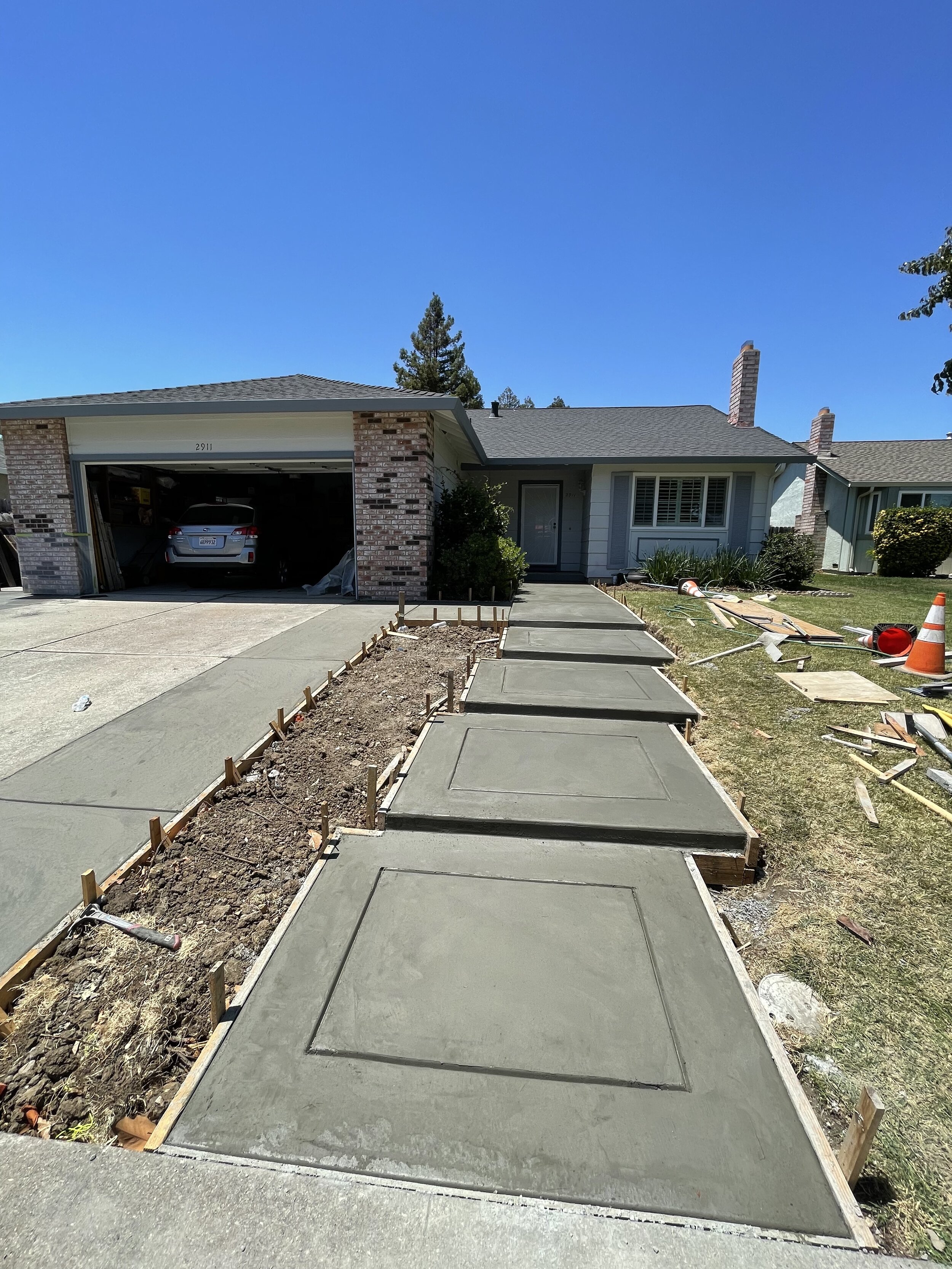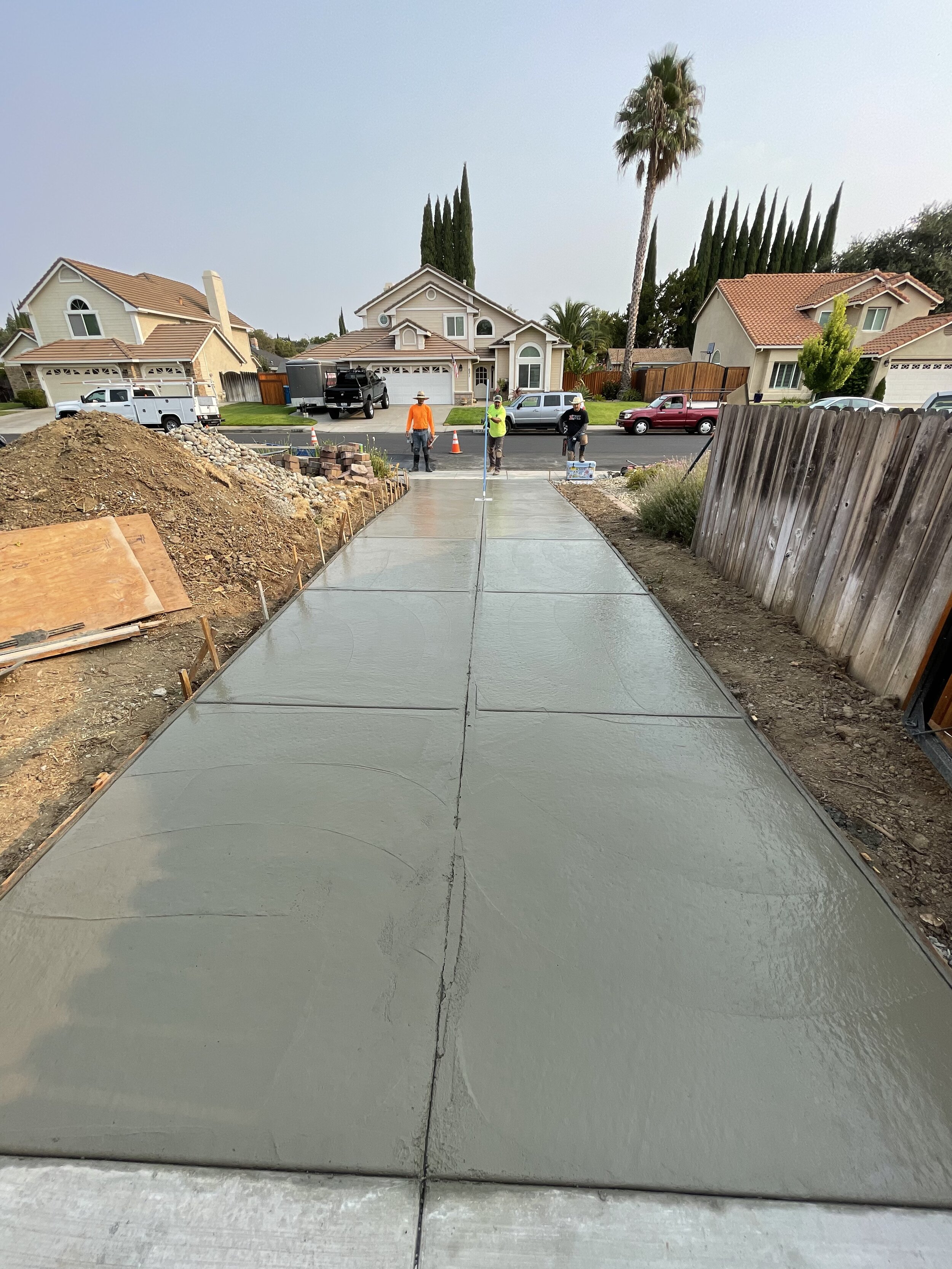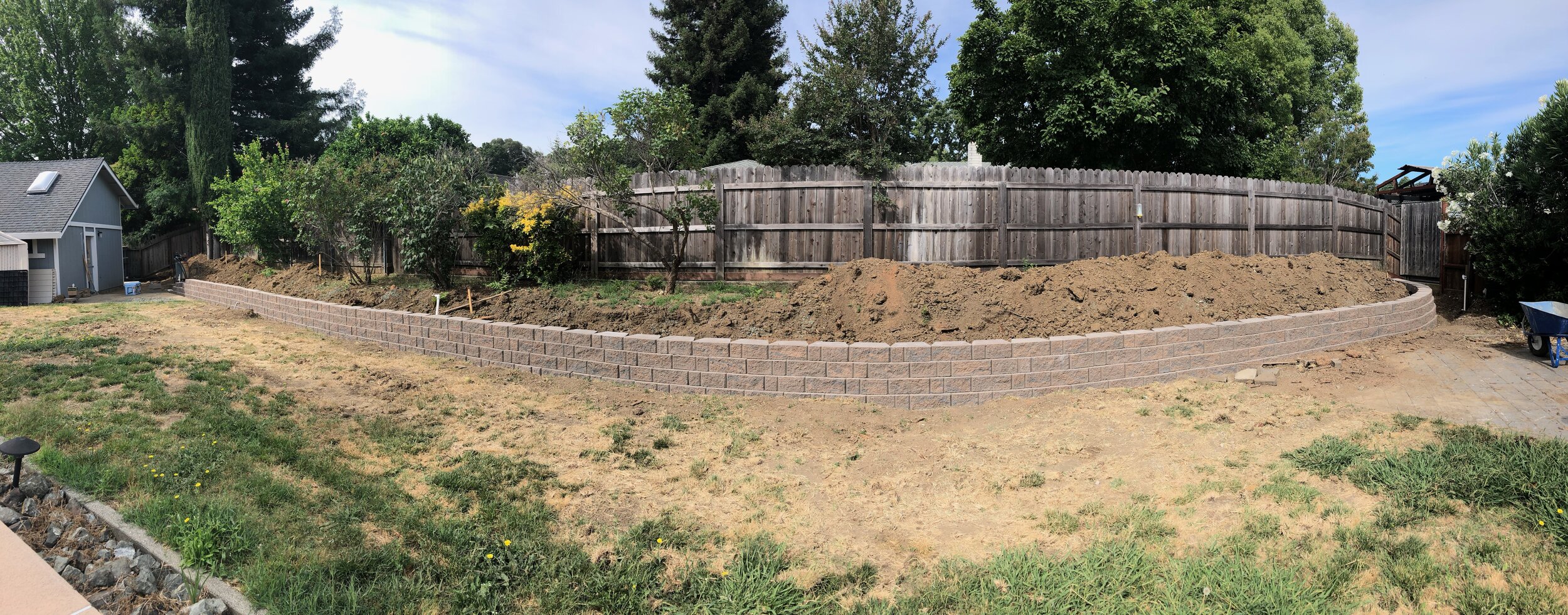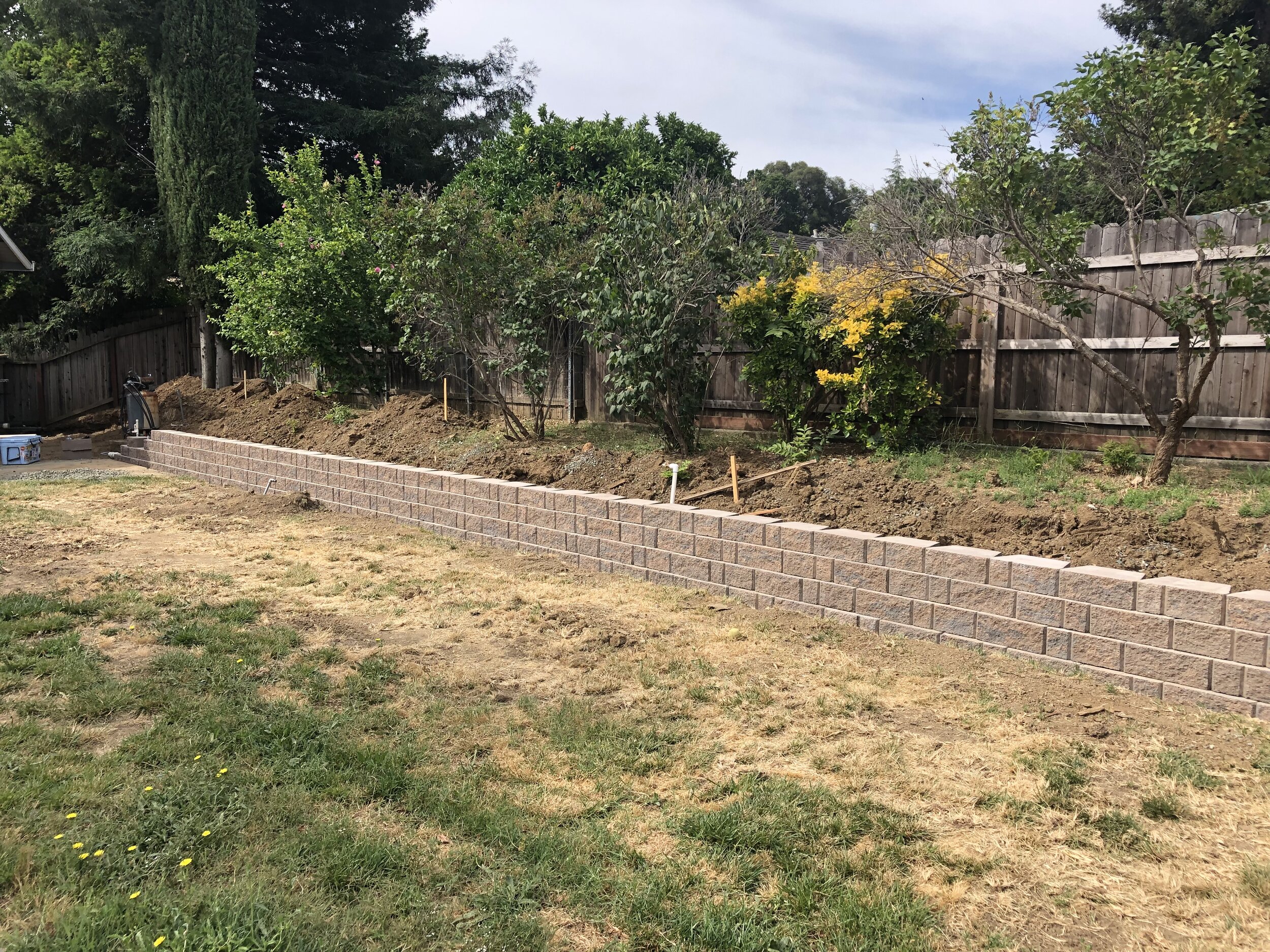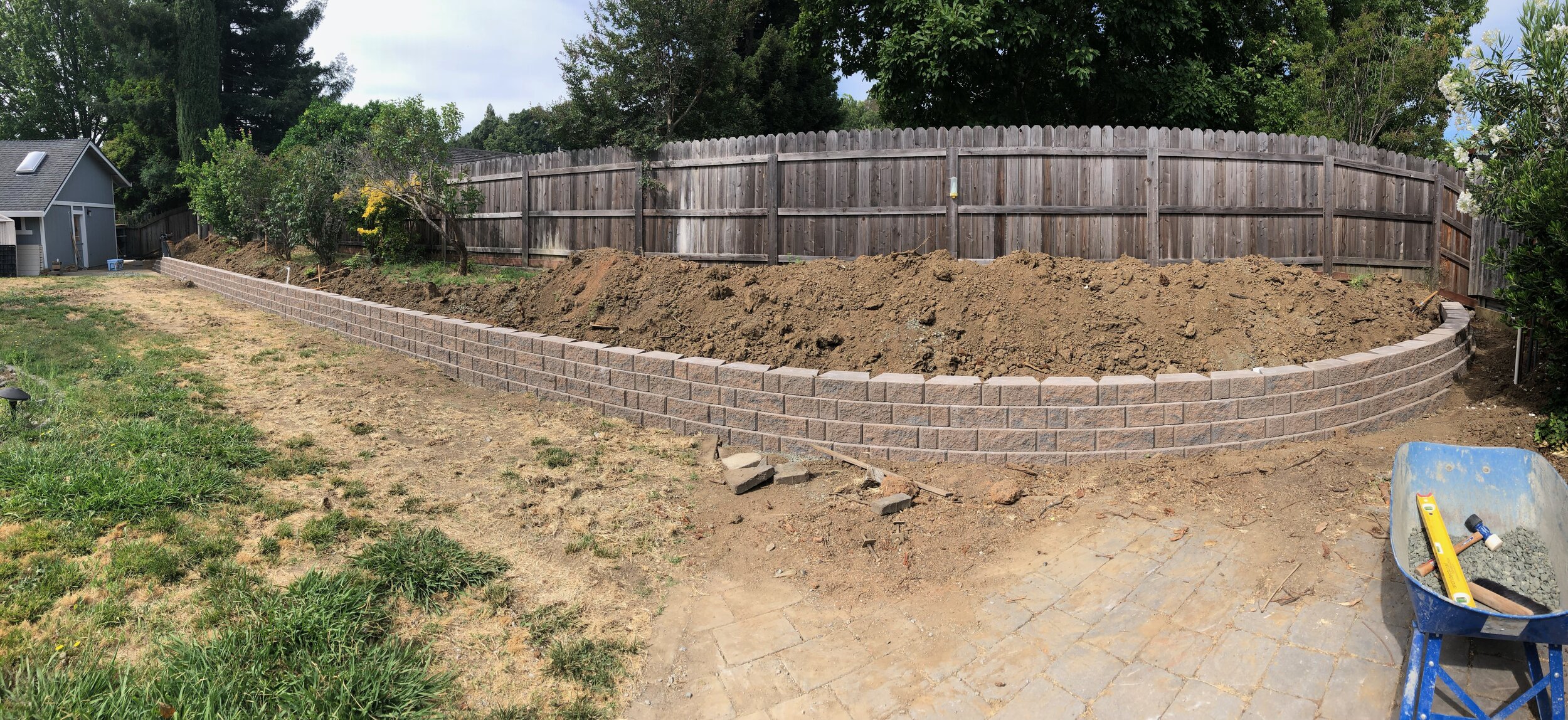Residential Construction

Planning
The first step is translating your vision into a drawing.
It is important to consider nearby structures, soil conditions, and drainage conditions.
Utilities & Drain Systems
It is critical to protect existing utilities, power lines, water lines, sewer lines, and gas lines supplying your property. Before any excavation takes place, all projects are marked for USA - Underground Service Alert, North 811. Over time, downspouts tend to erode the concrete surface.
AC Condensation drains can also cause damage. Hillsides and slopes can have a drainage system when properly planned. In my drawing plan, I will indicate the best locations for inlet and outlet areas.
Base Materials & Reinforcement
All concrete structures must have a base layer consisting of aggregate rock or compacted sand. This provides cushion support from alternating soil conditions. The most commonly used reinforcement is welded wire fabric. However, the wire mesh is infamous for sinking to the bottom of the concrete slab during the pour. Instead, we use rebar for enhanced support and a secondary product, such as fiber or steel mesh.
Utility Improvements
Original irrigation systems may need to be modified to fit new concrete areas. Estimates include potential upgrades and/or repairs.












